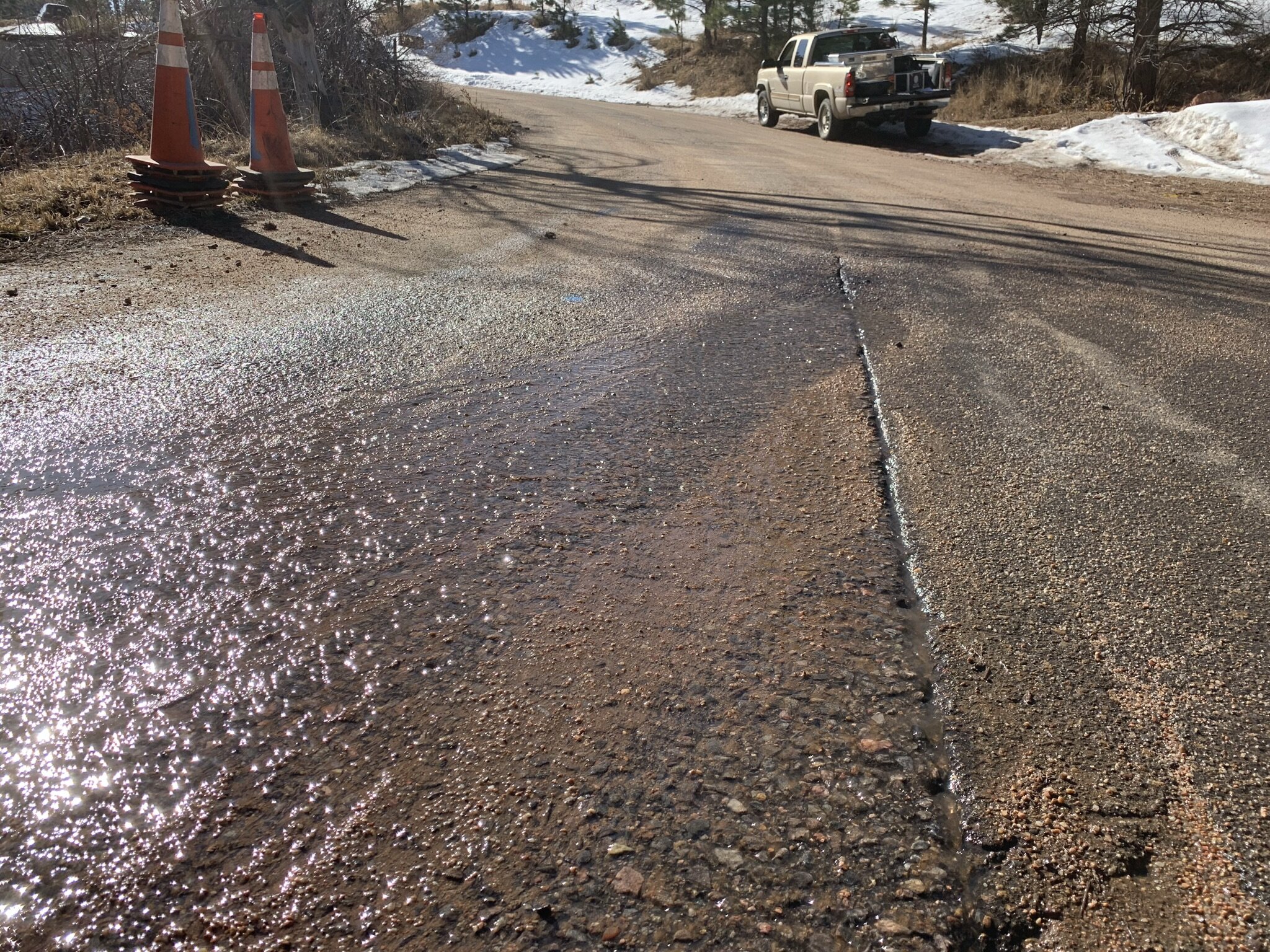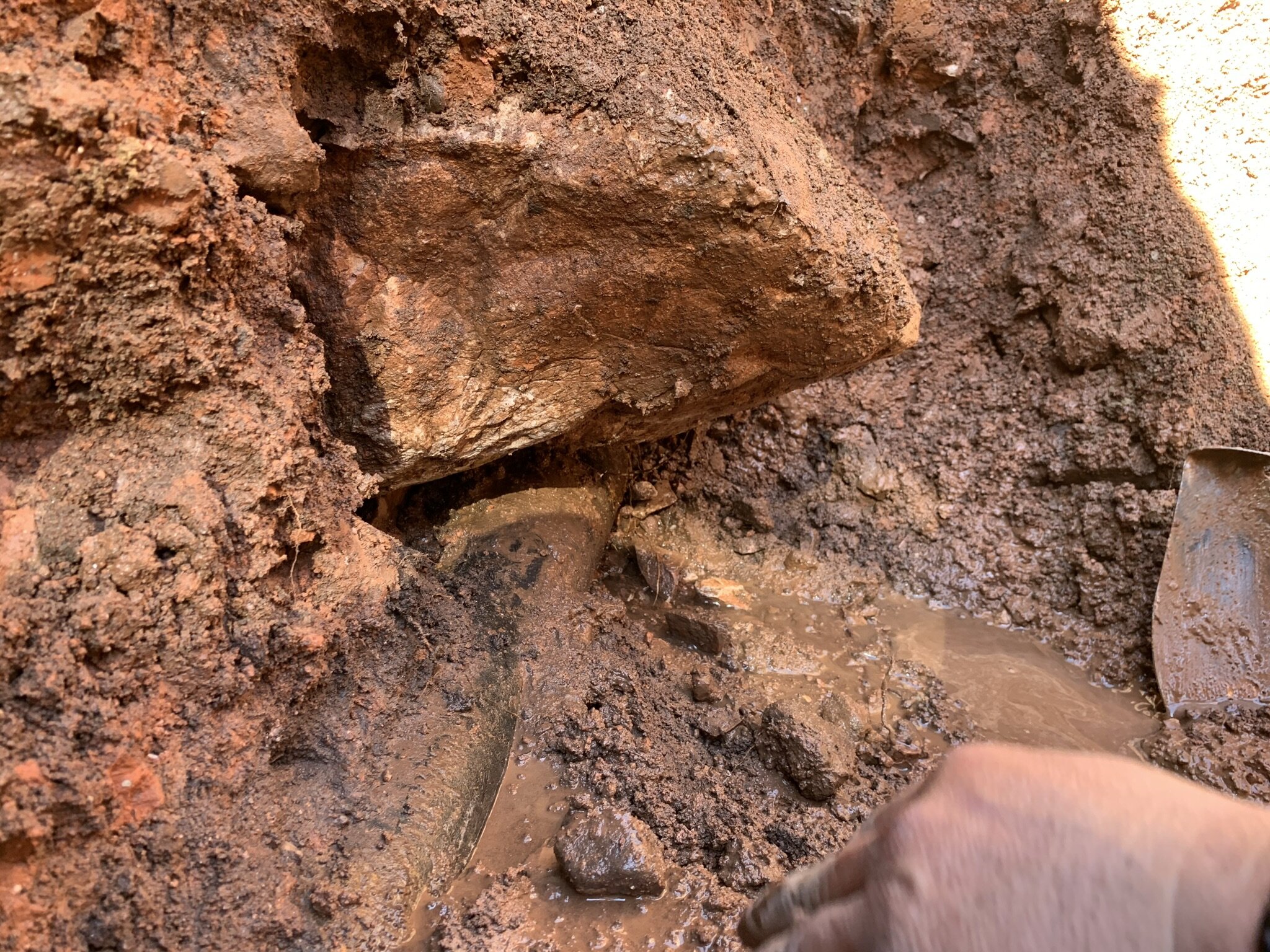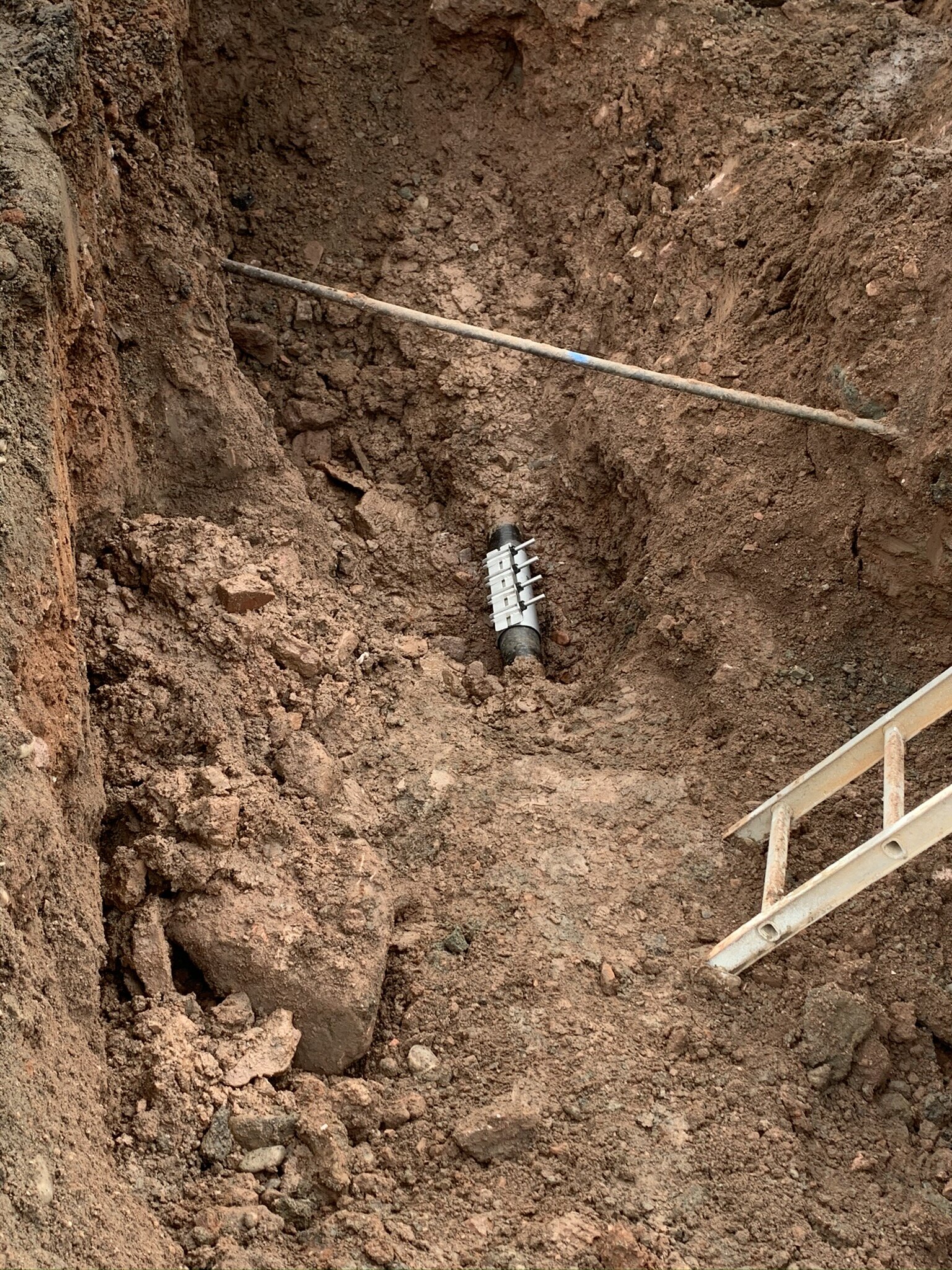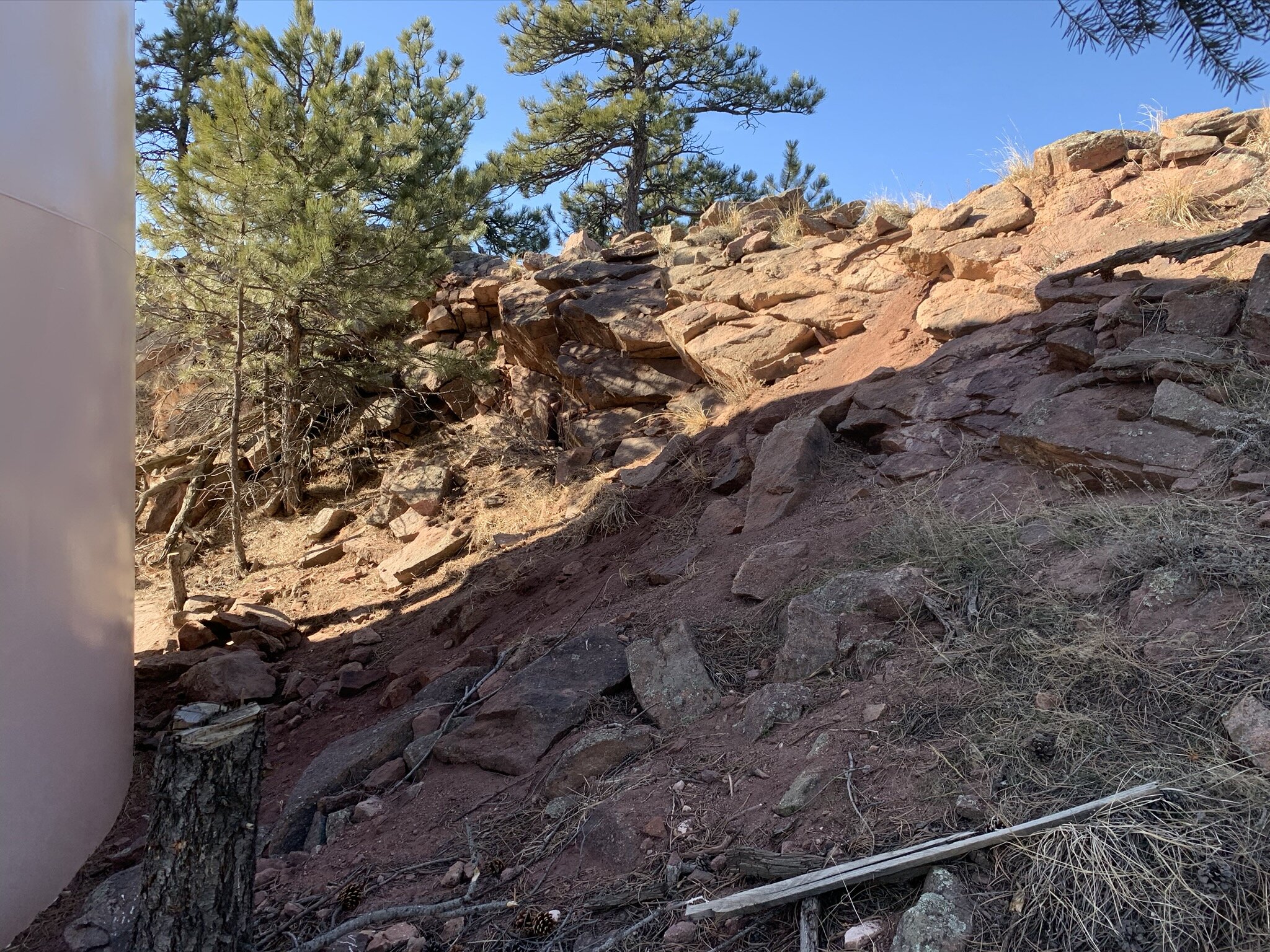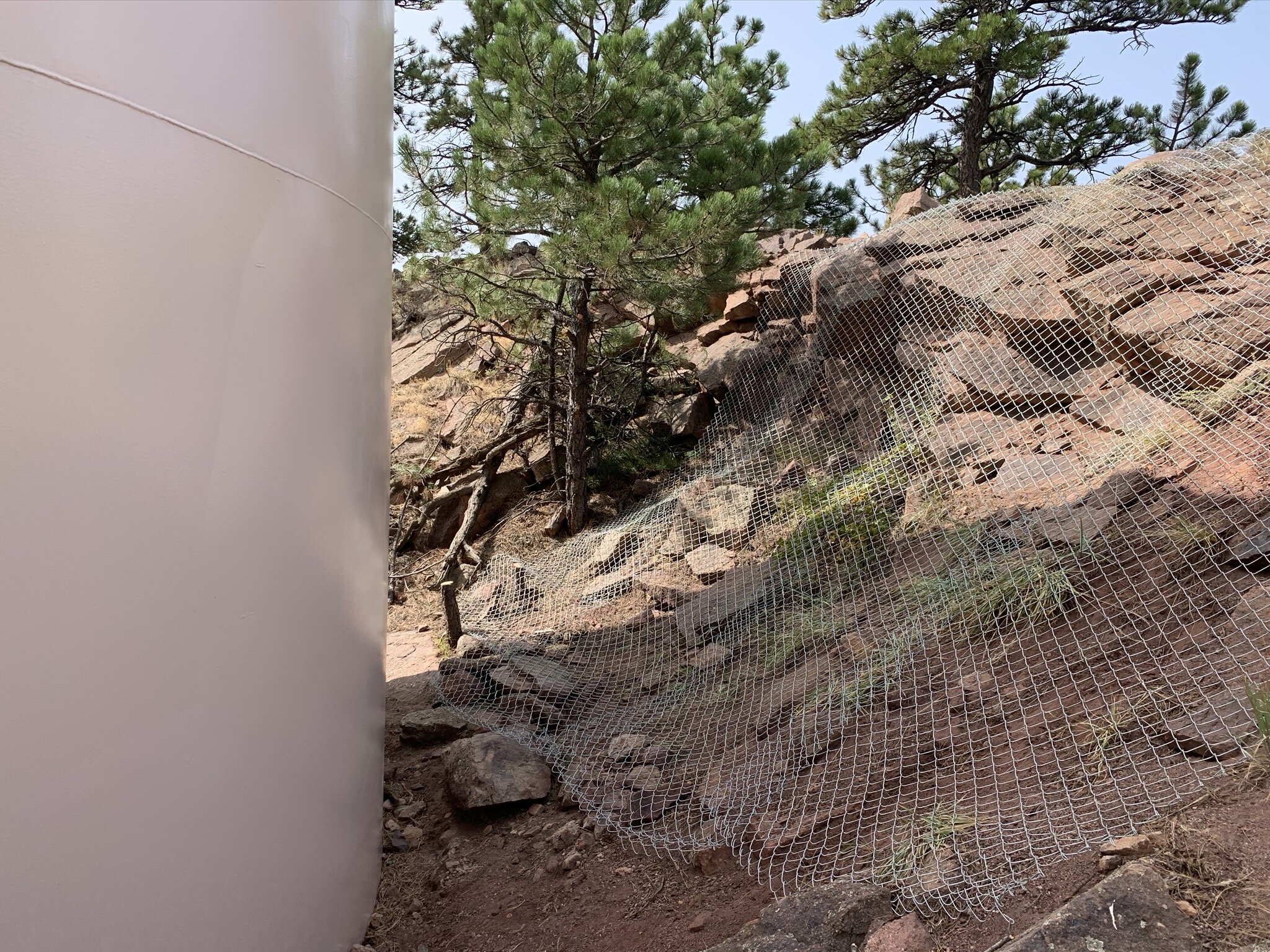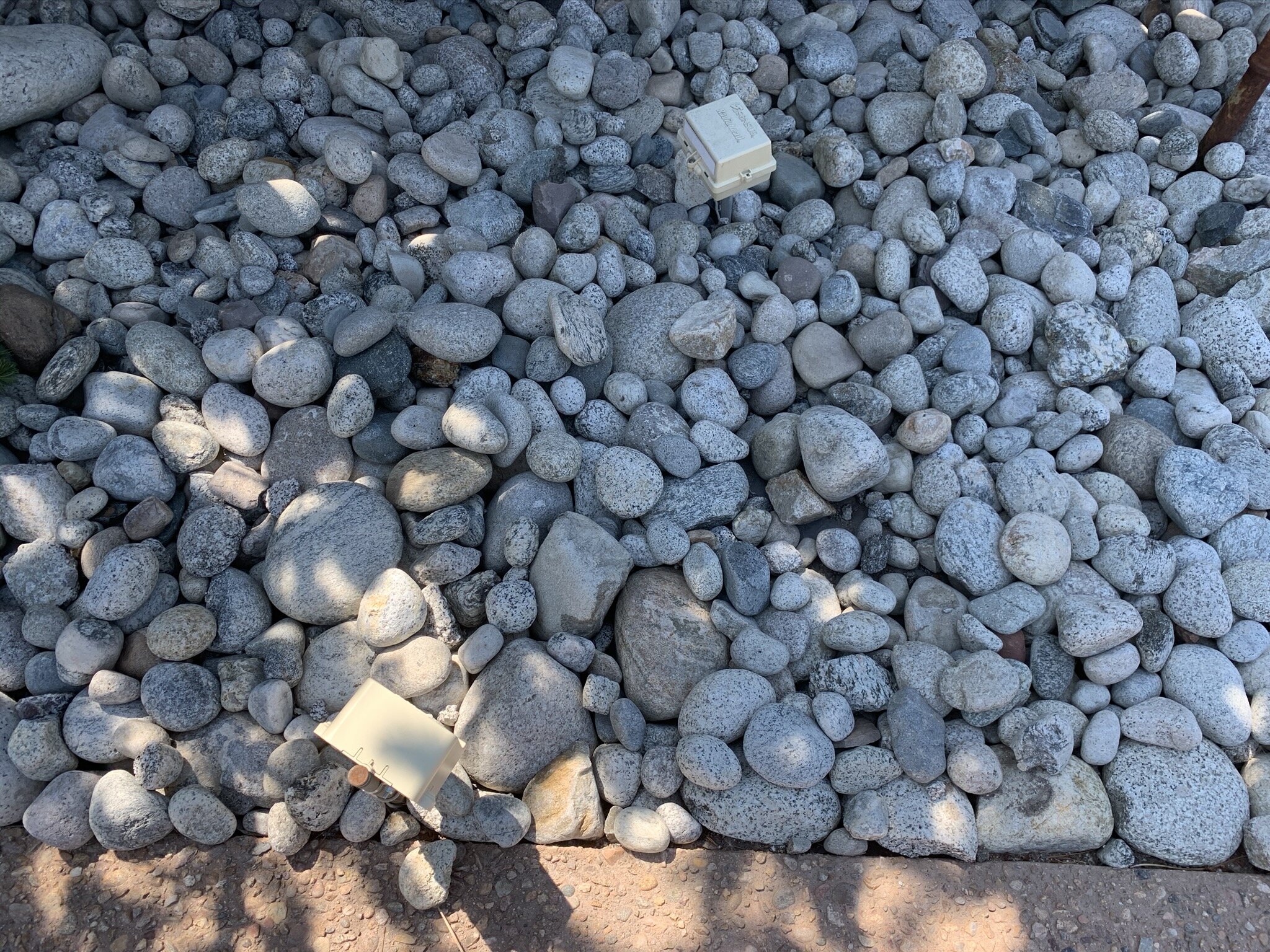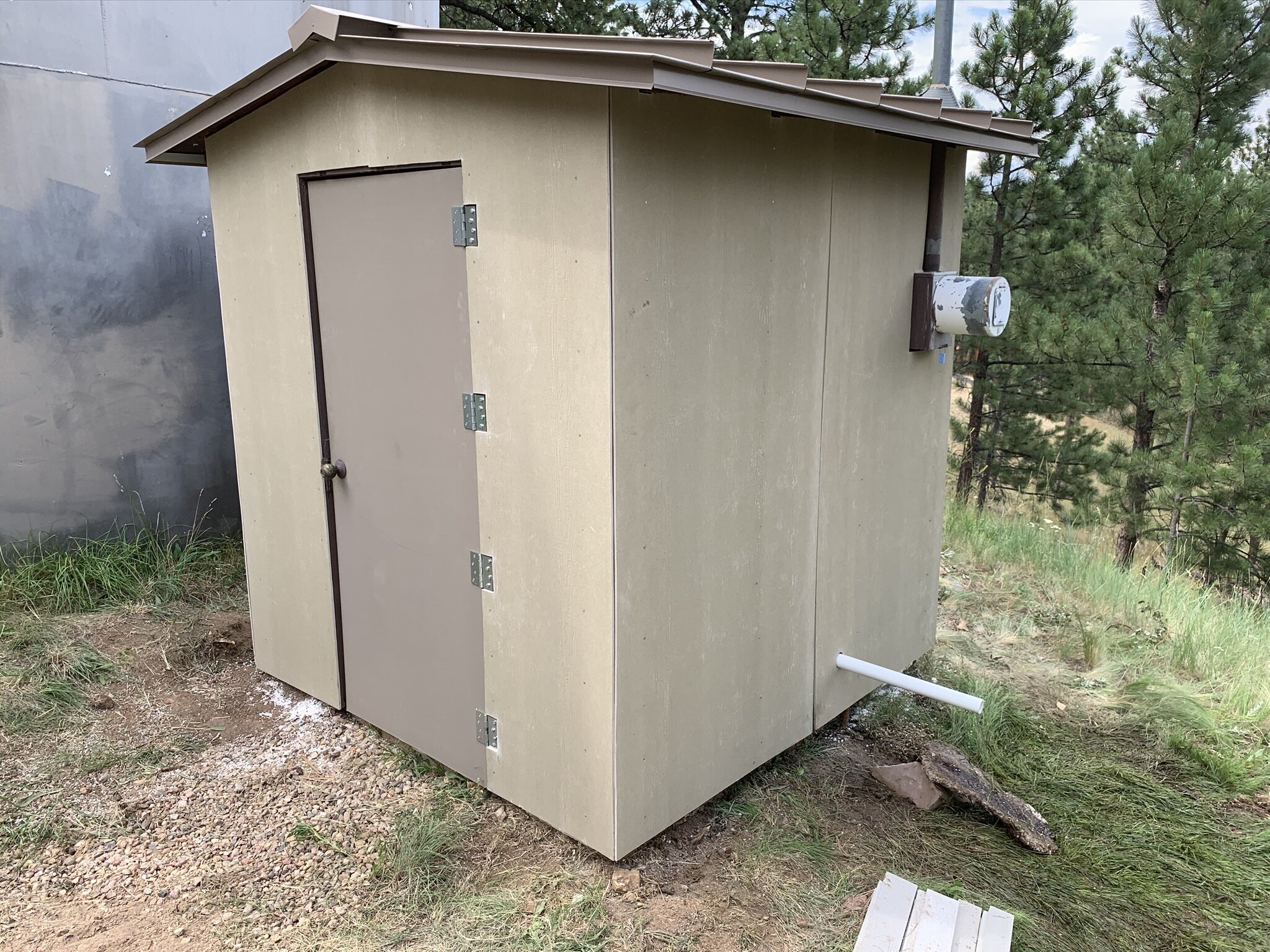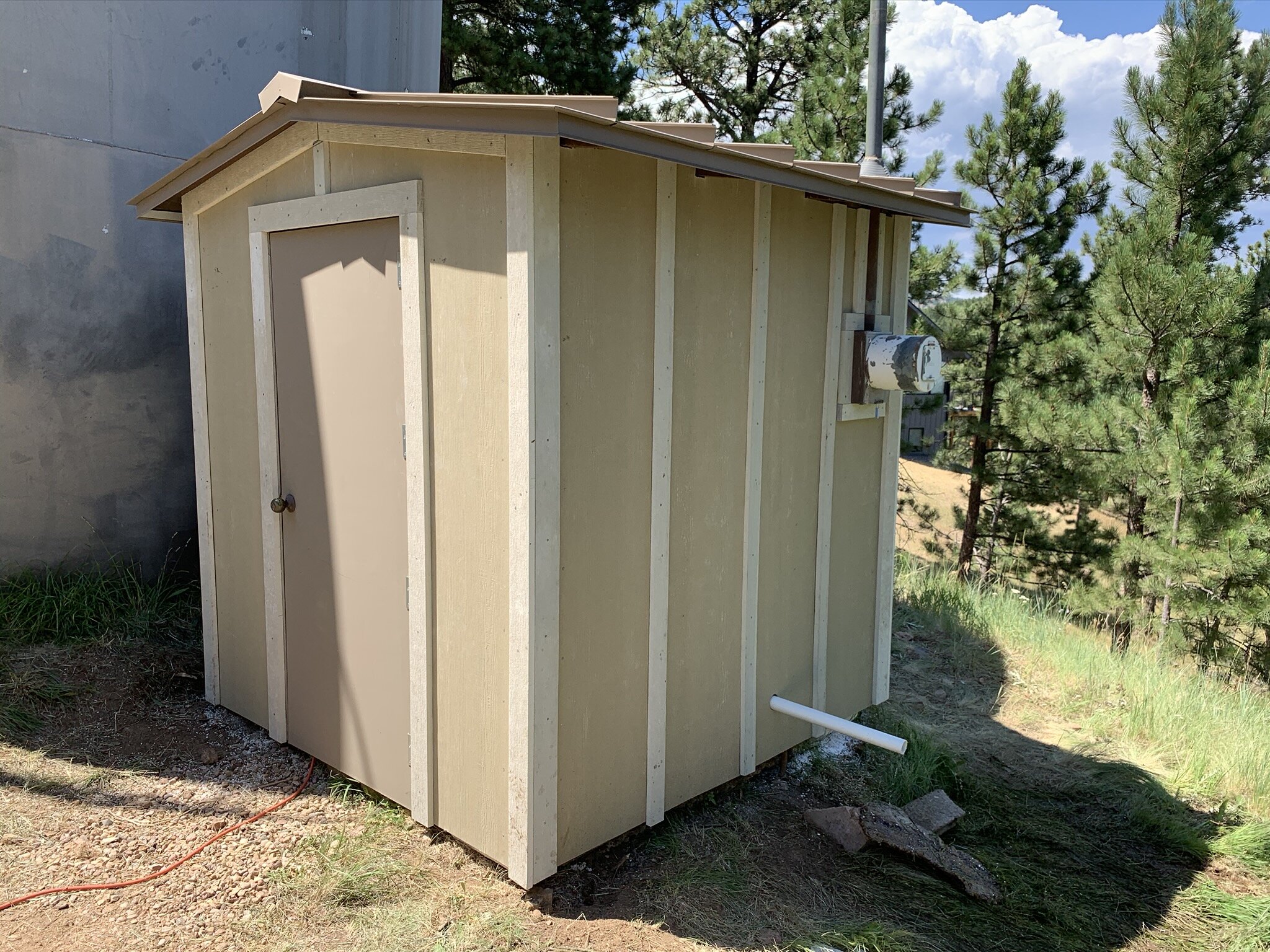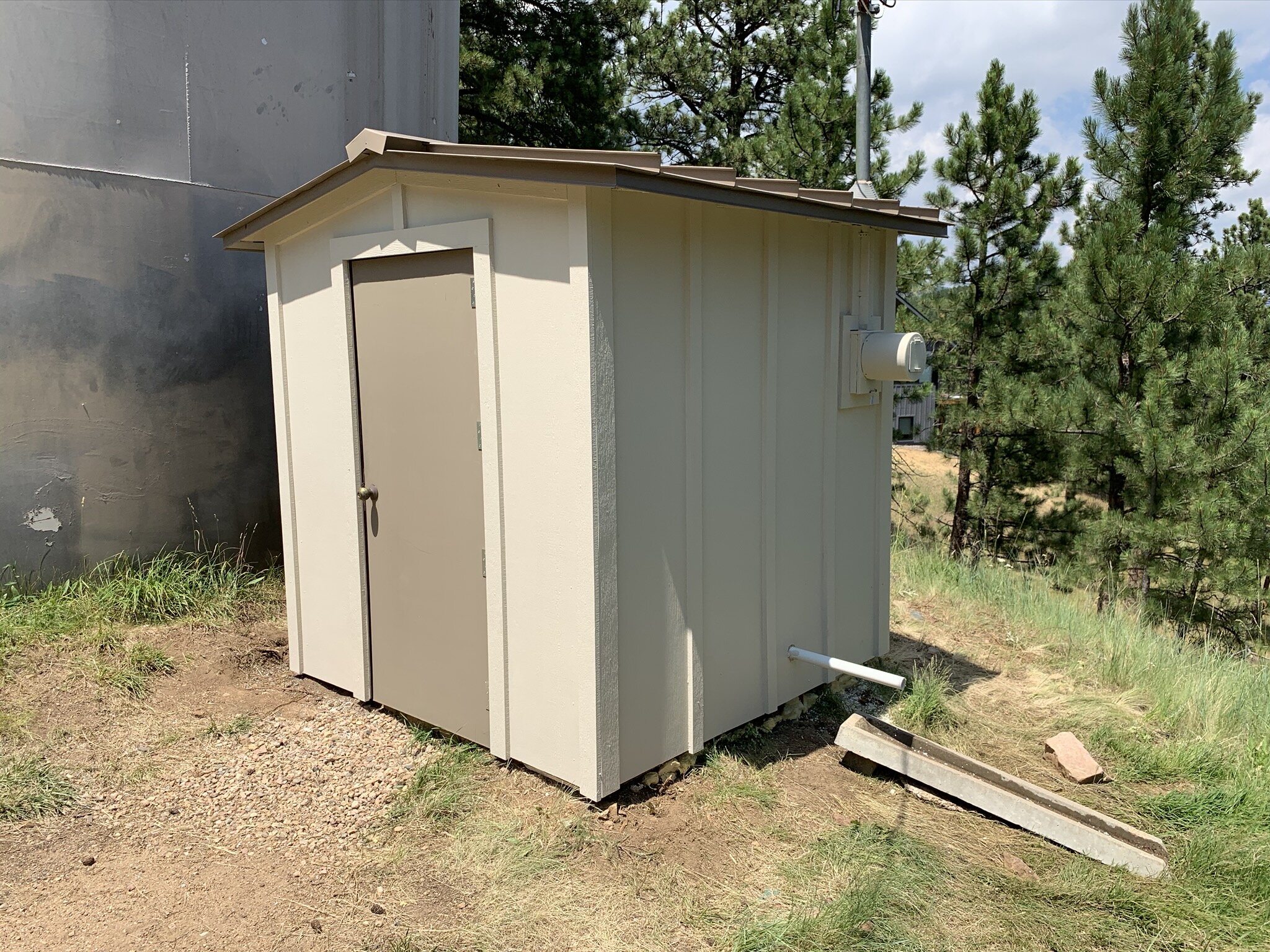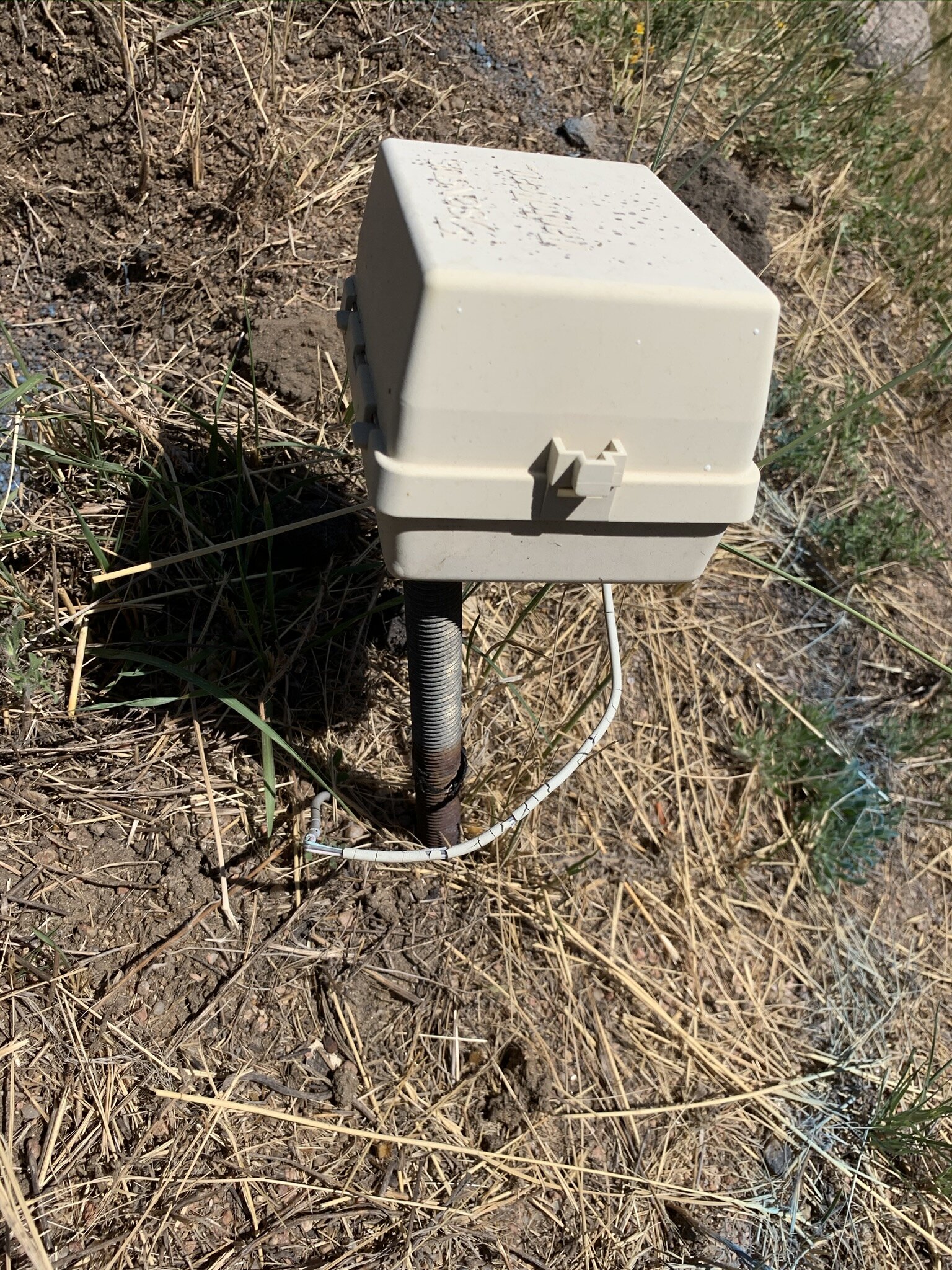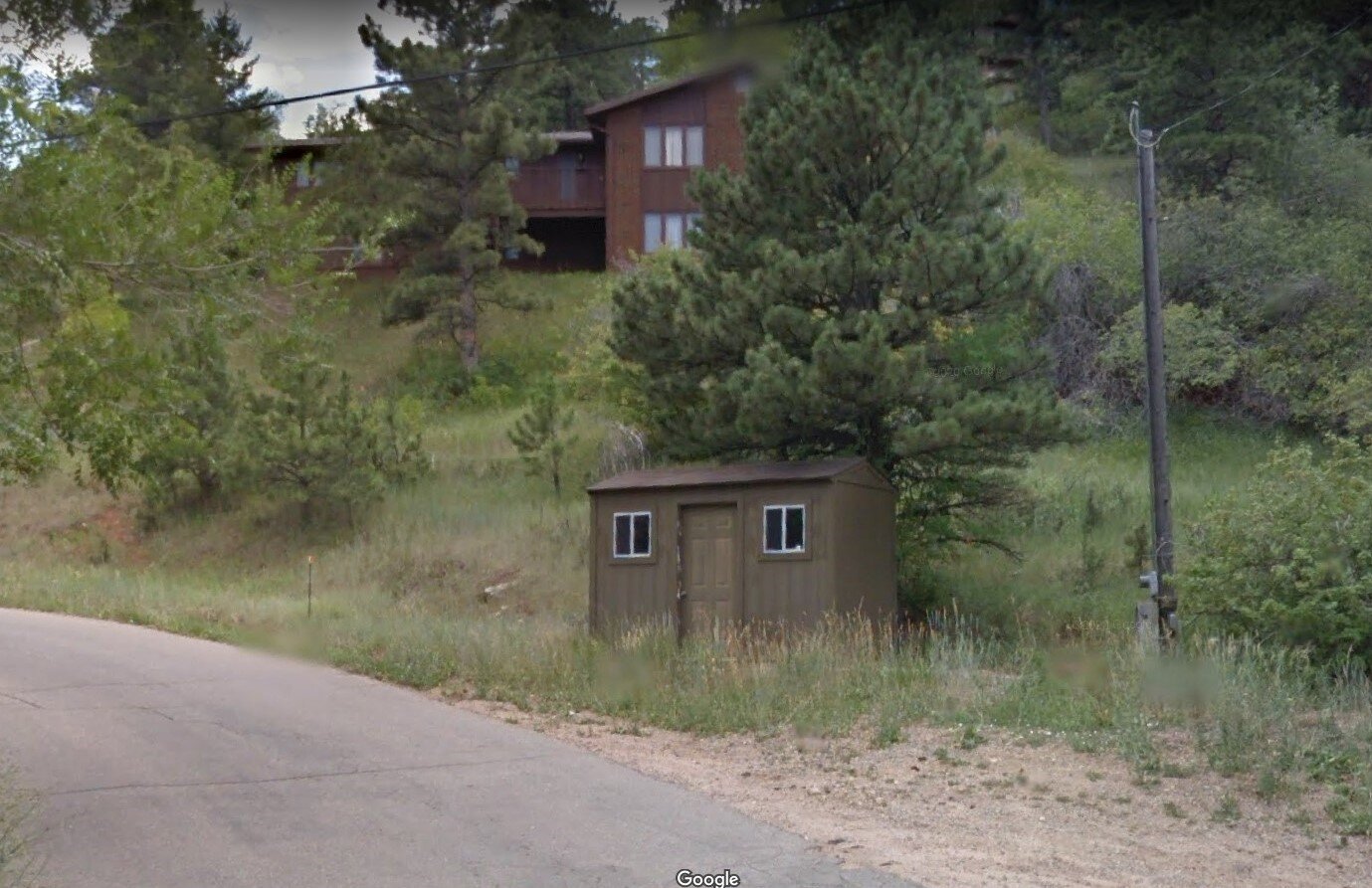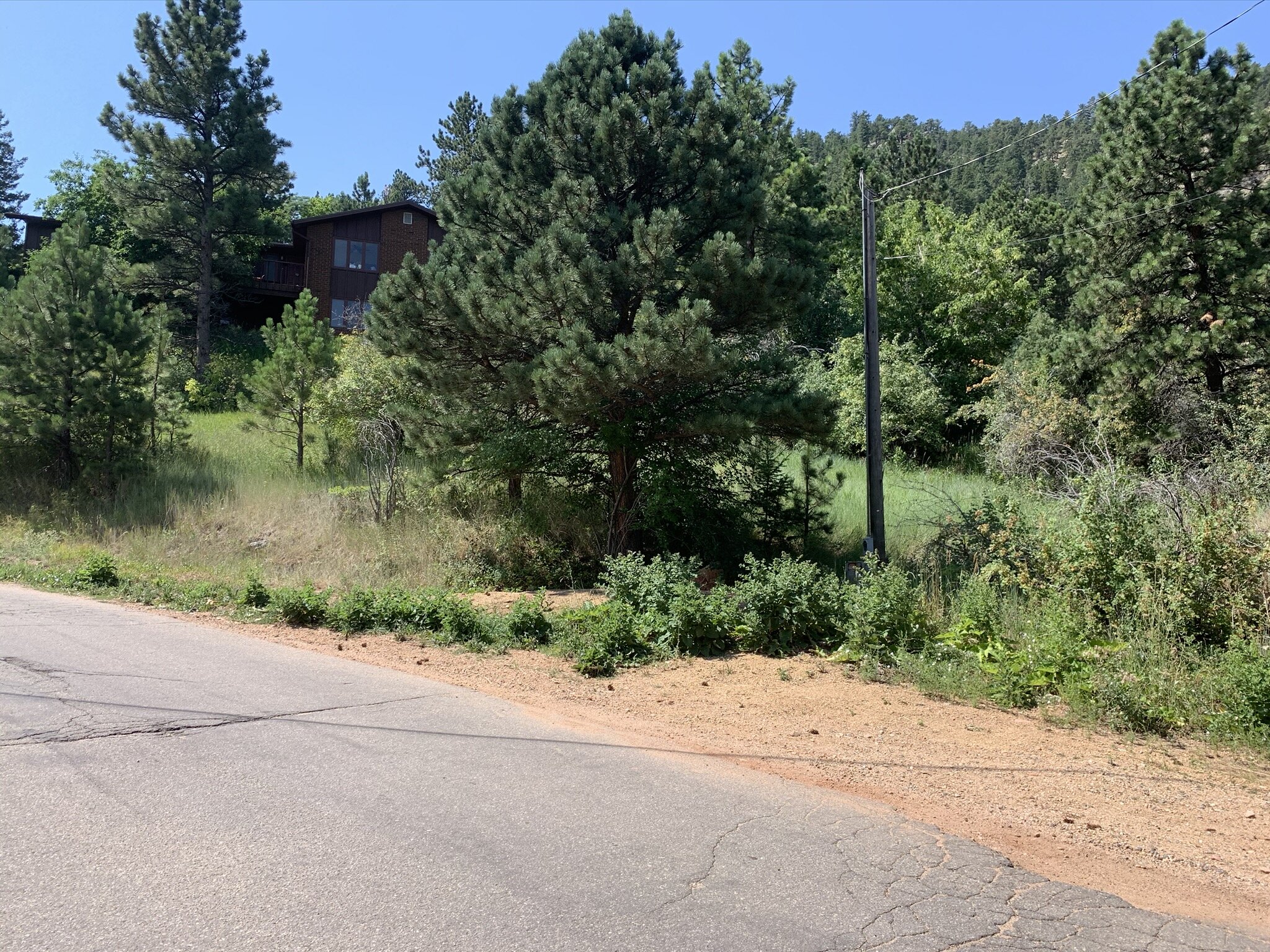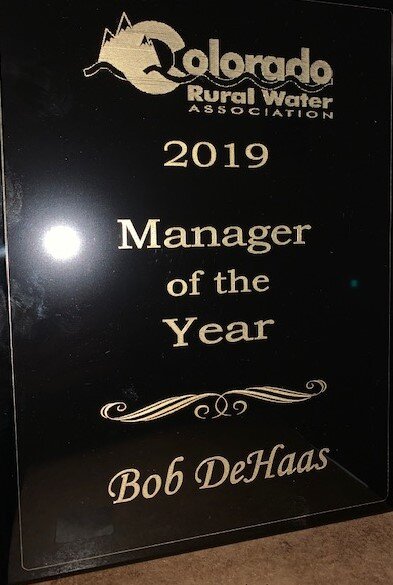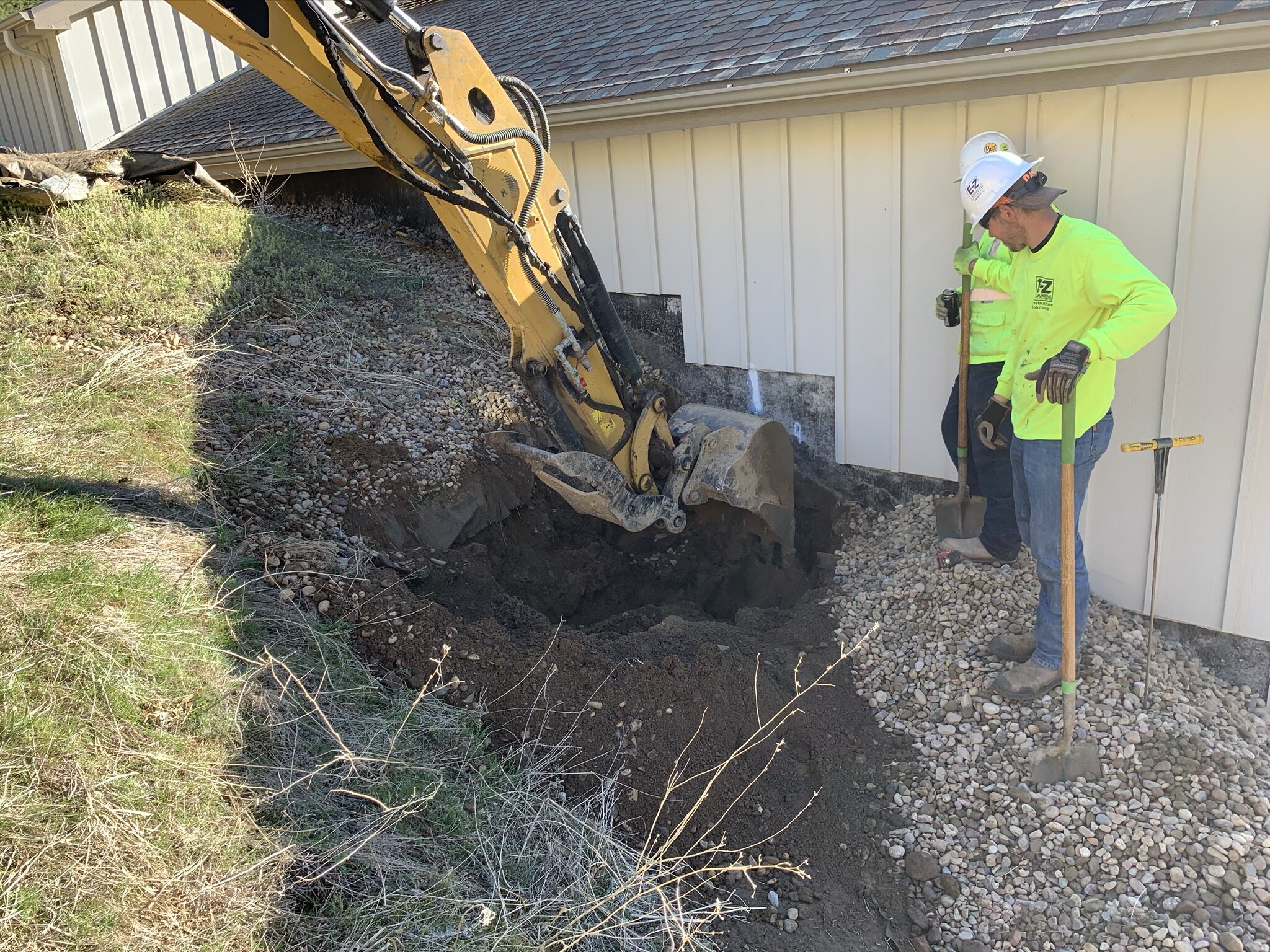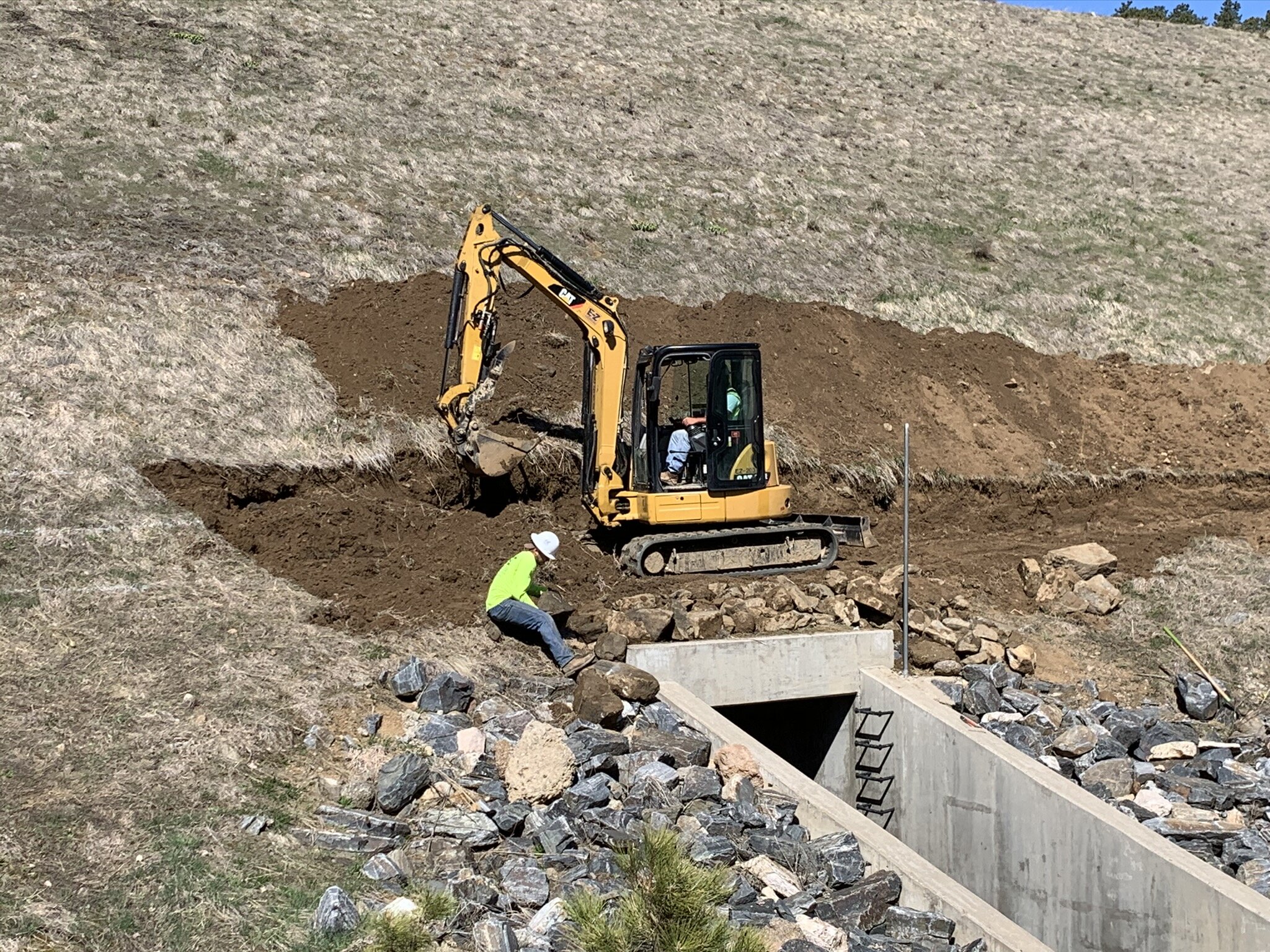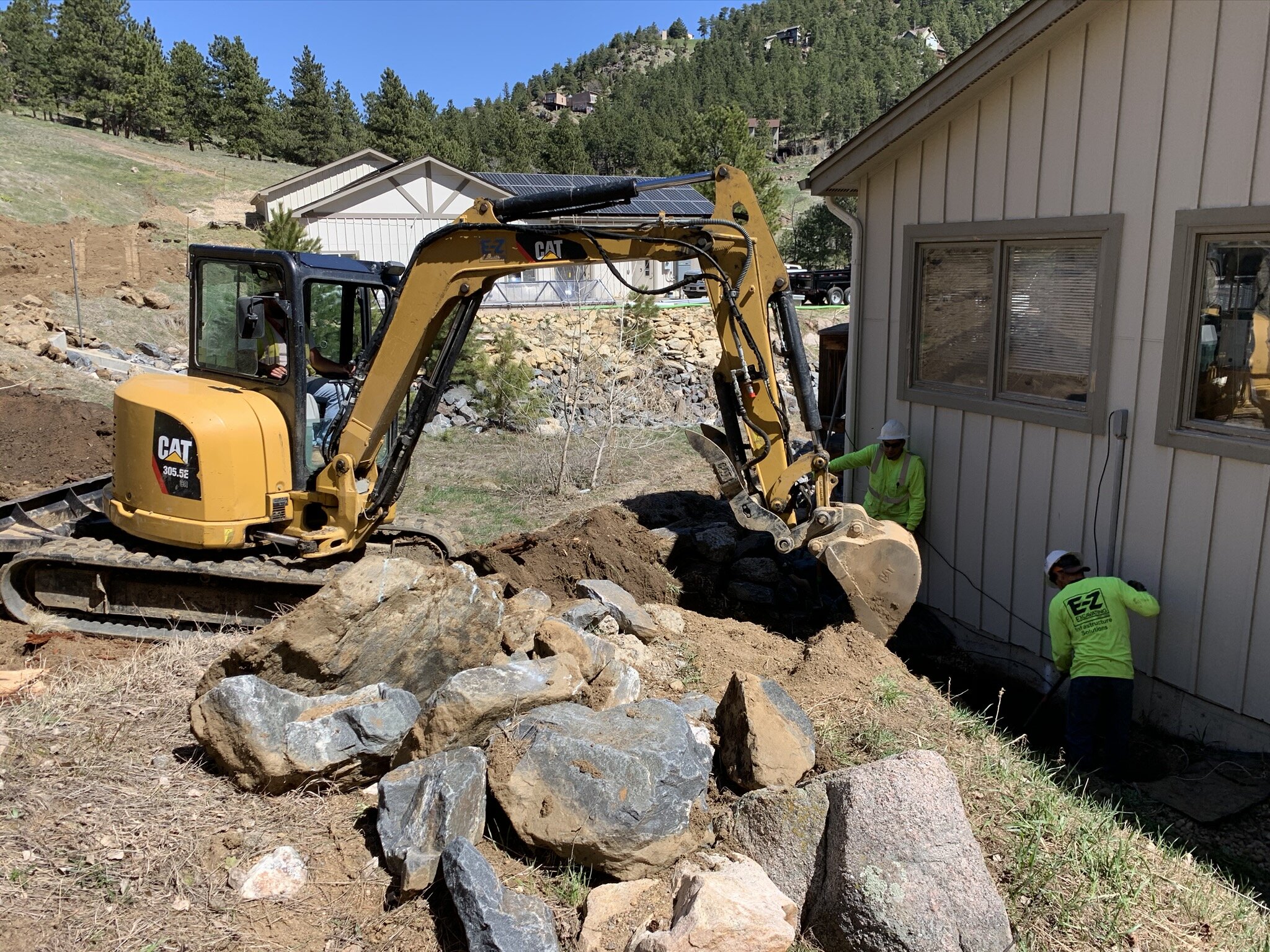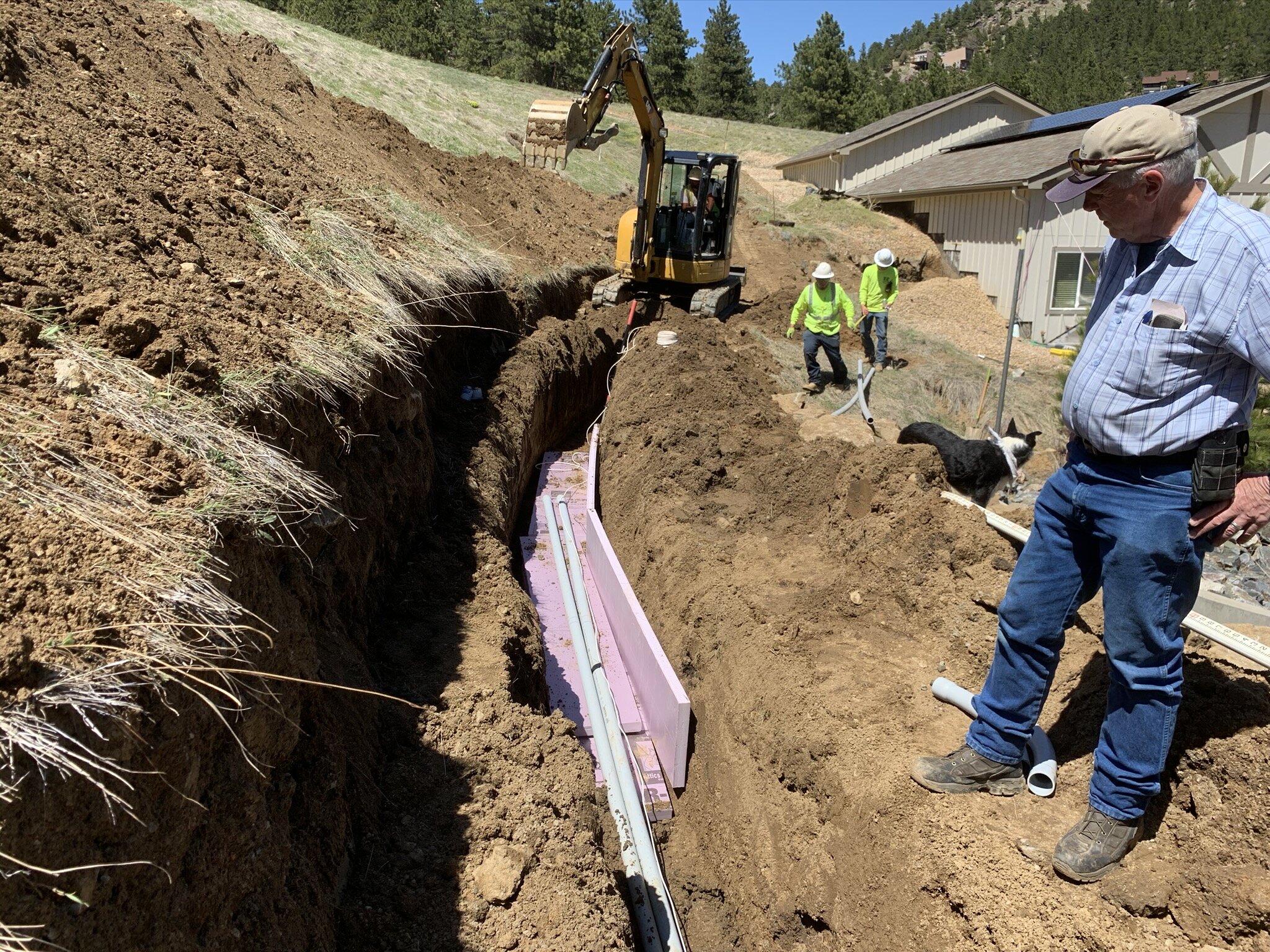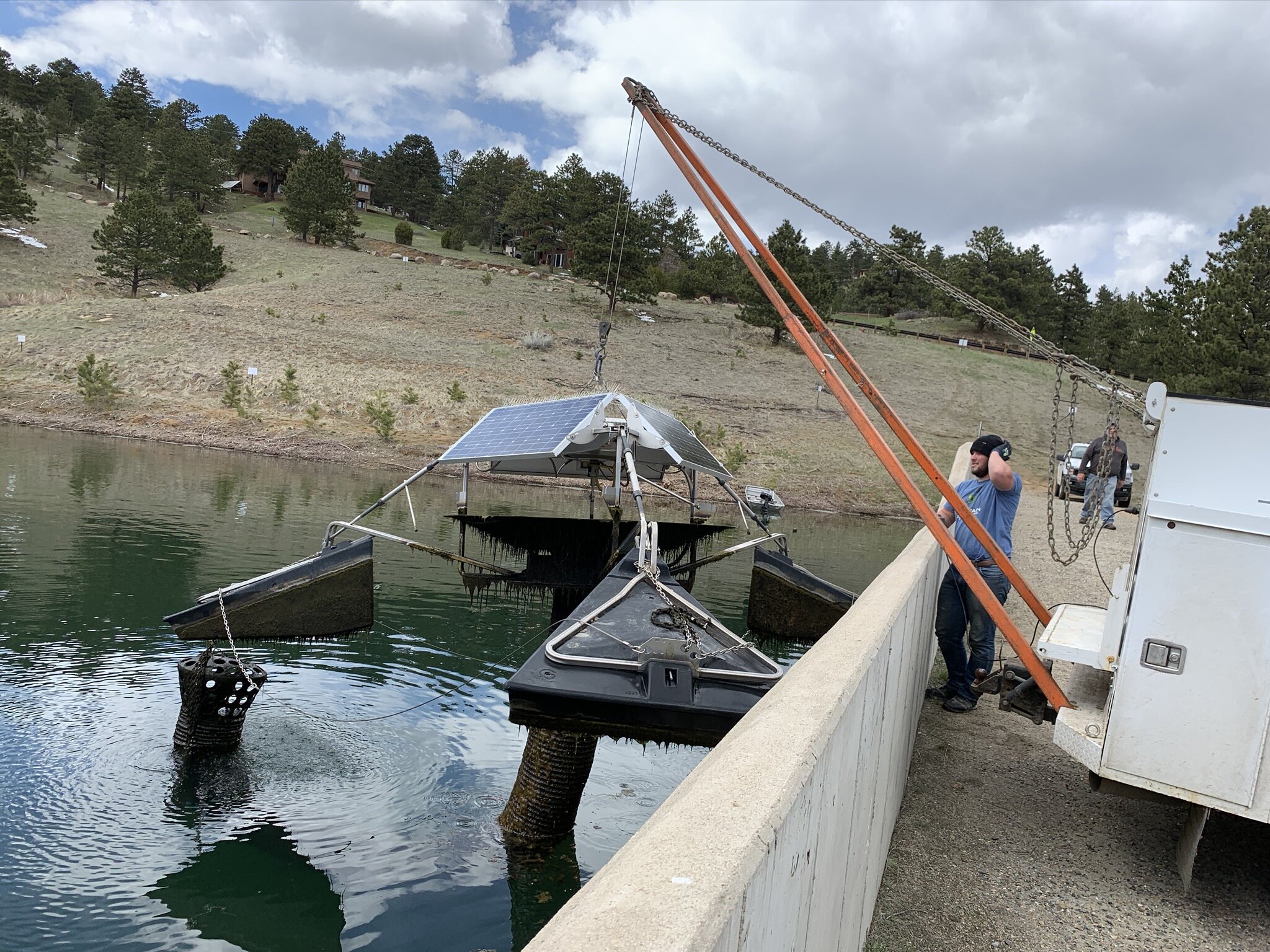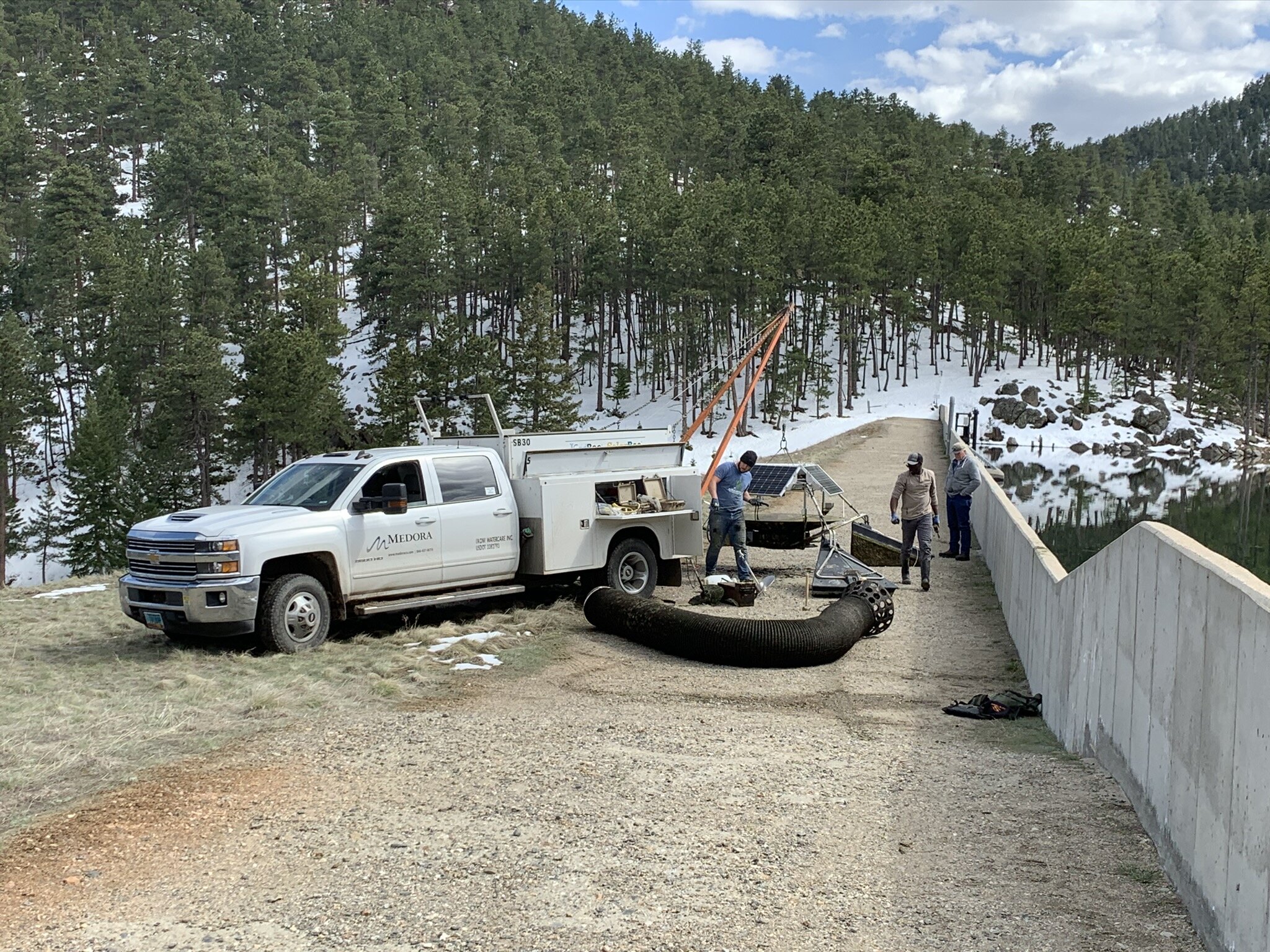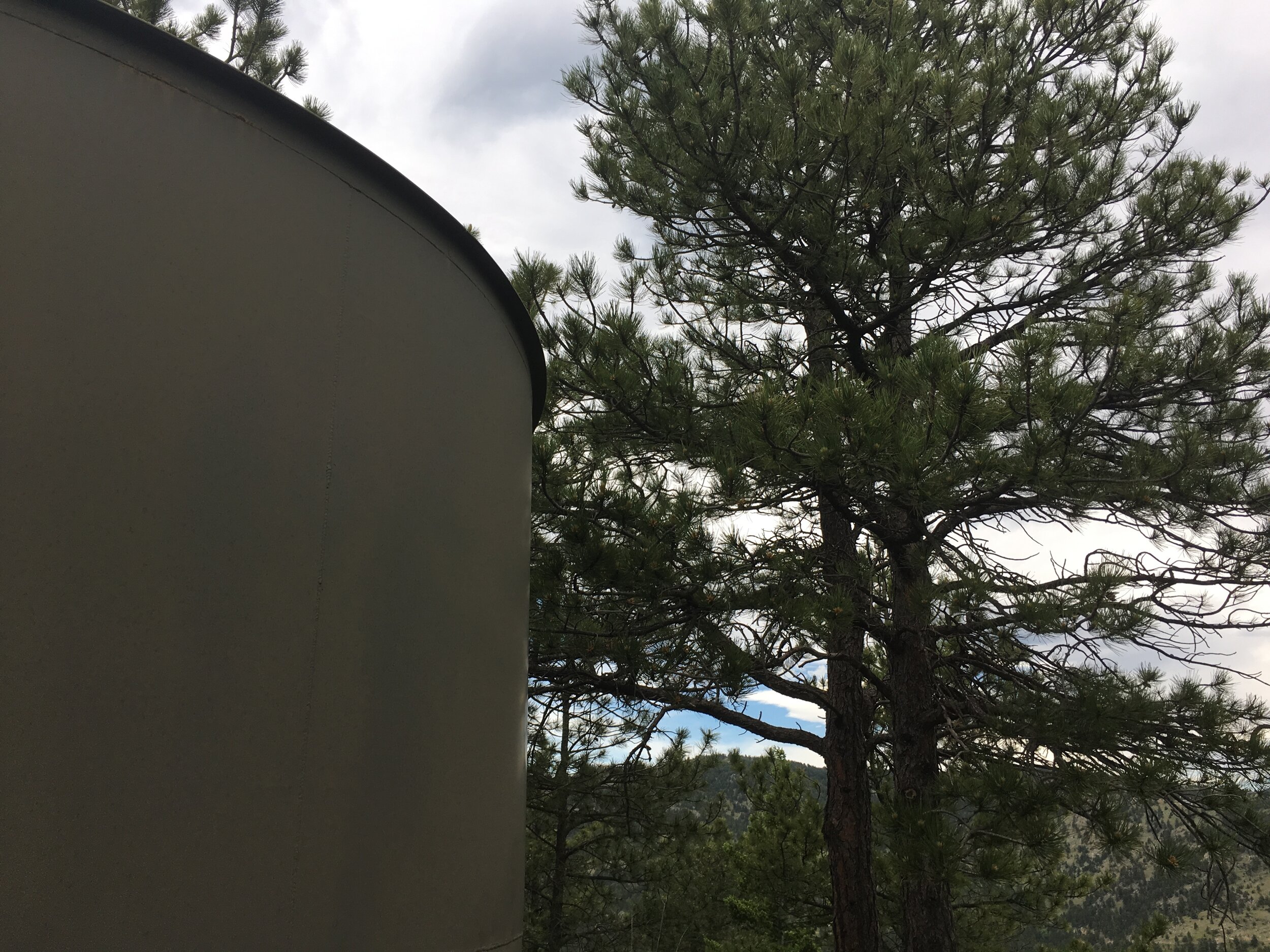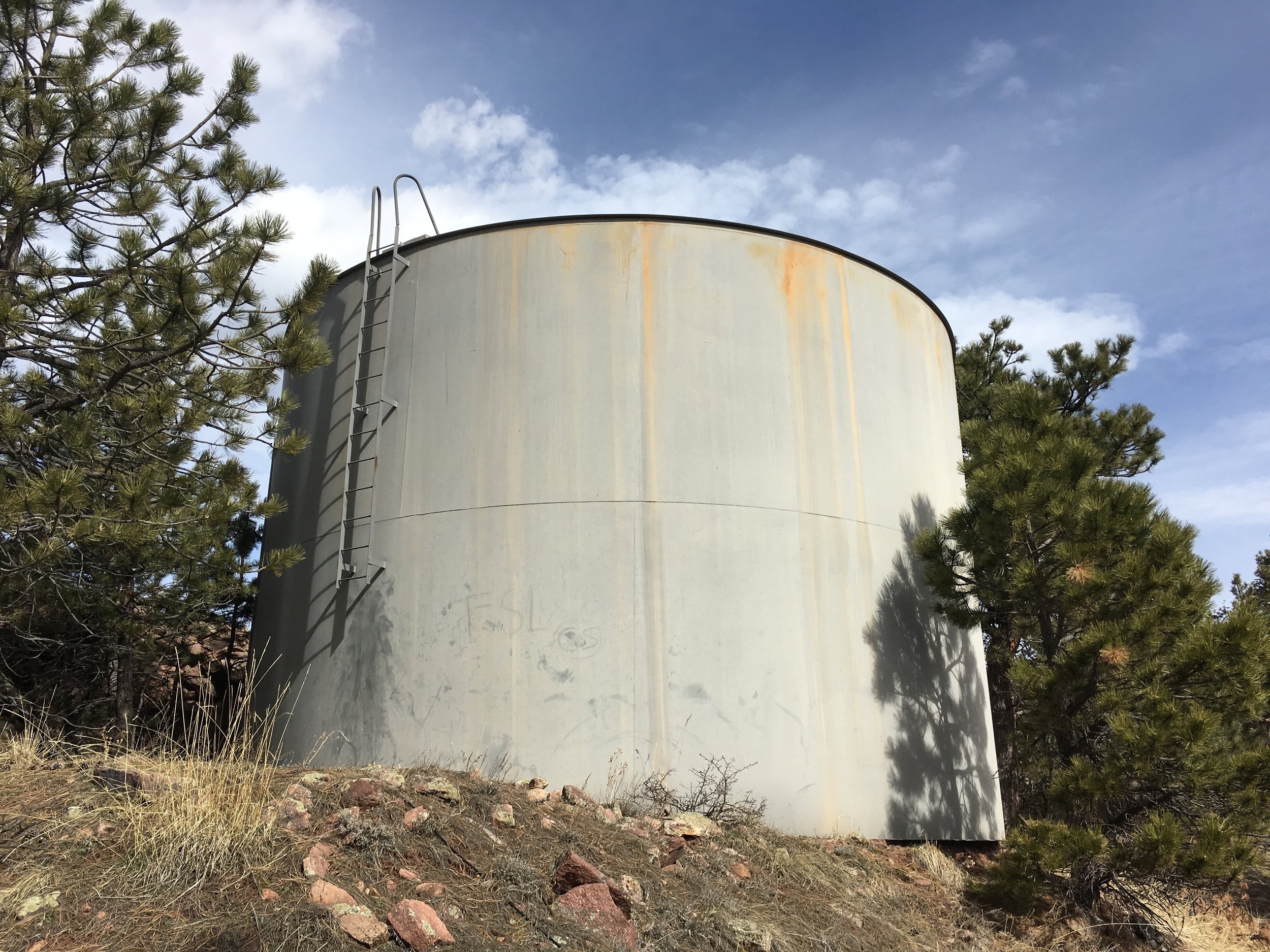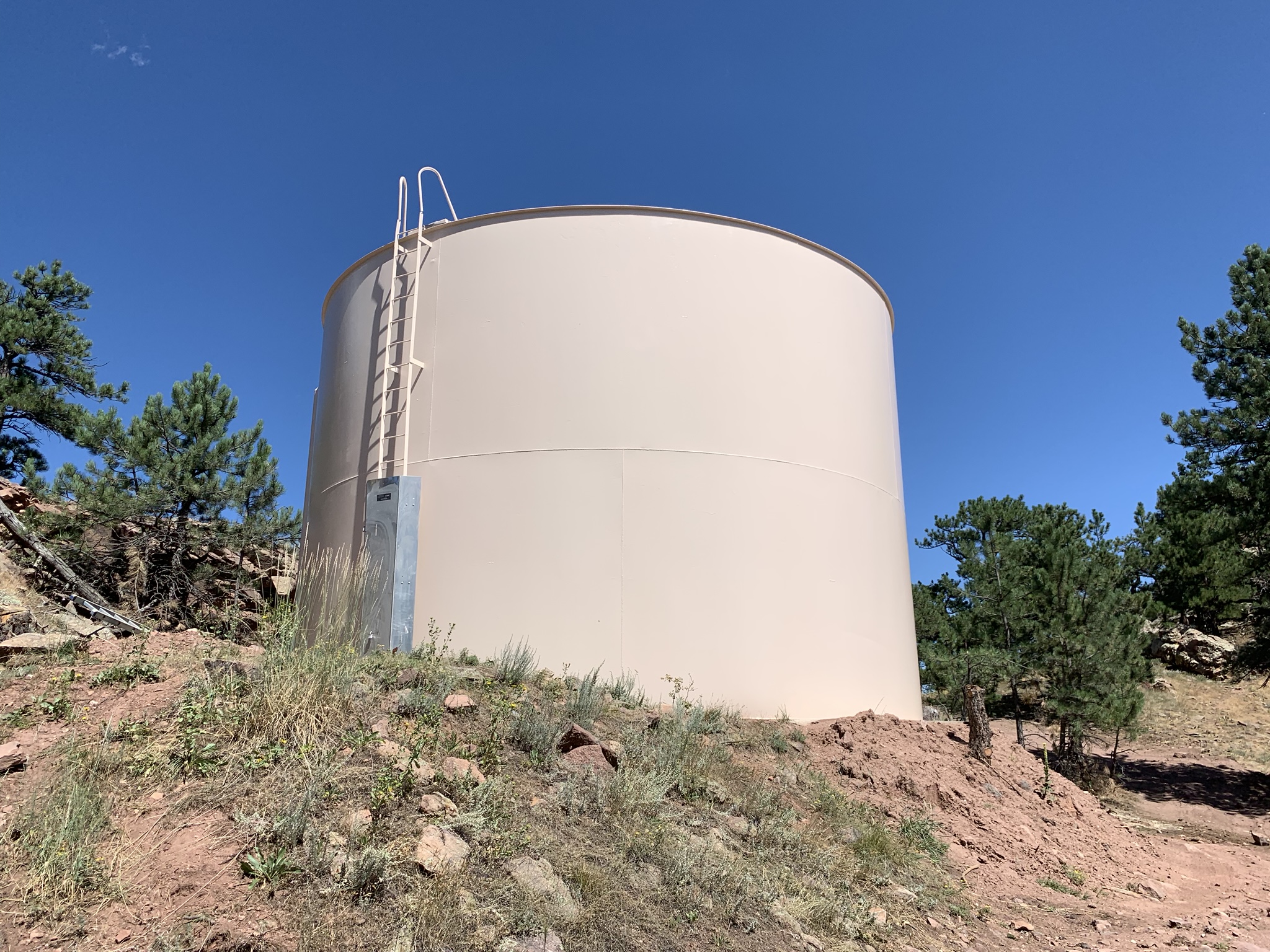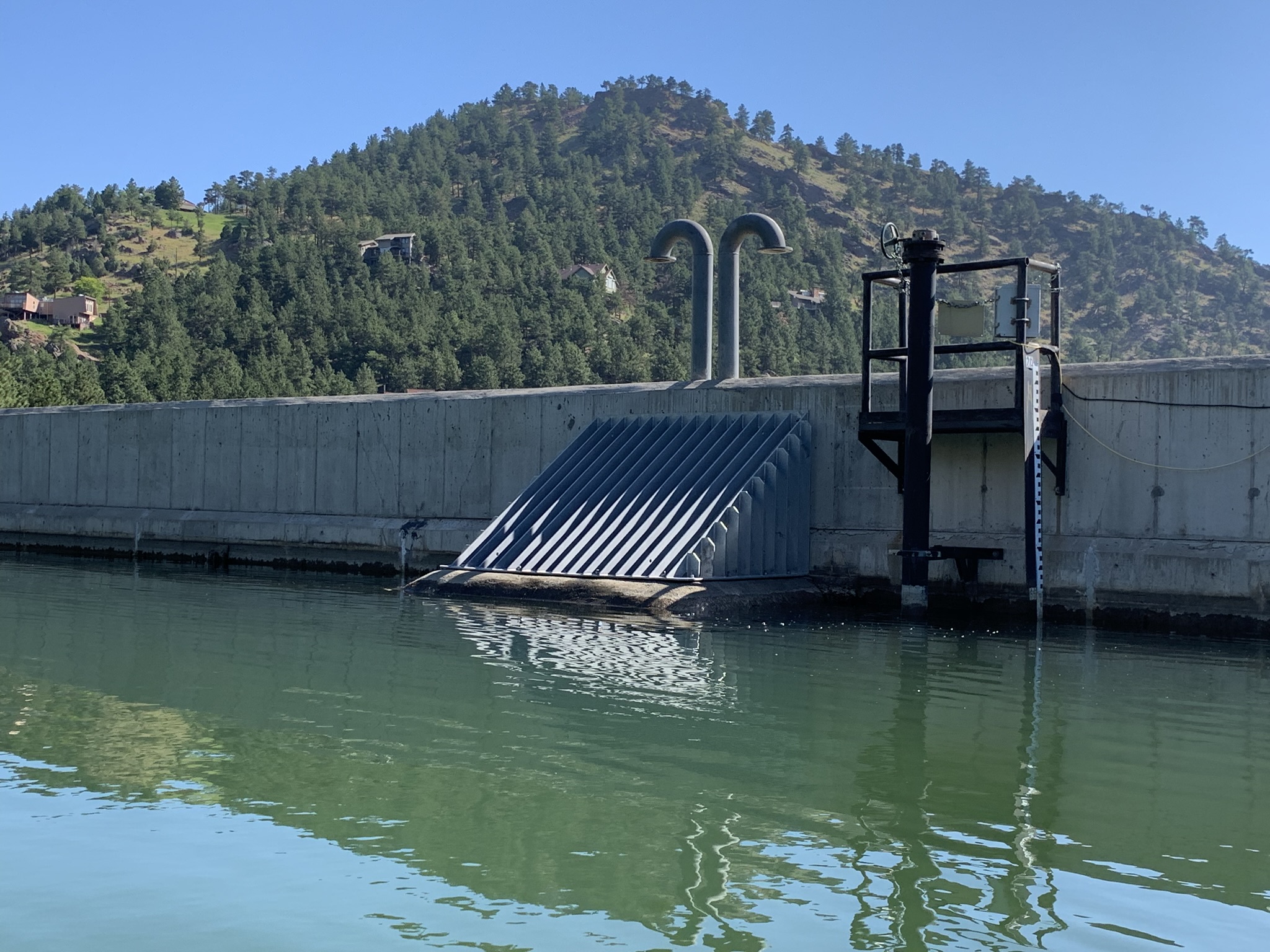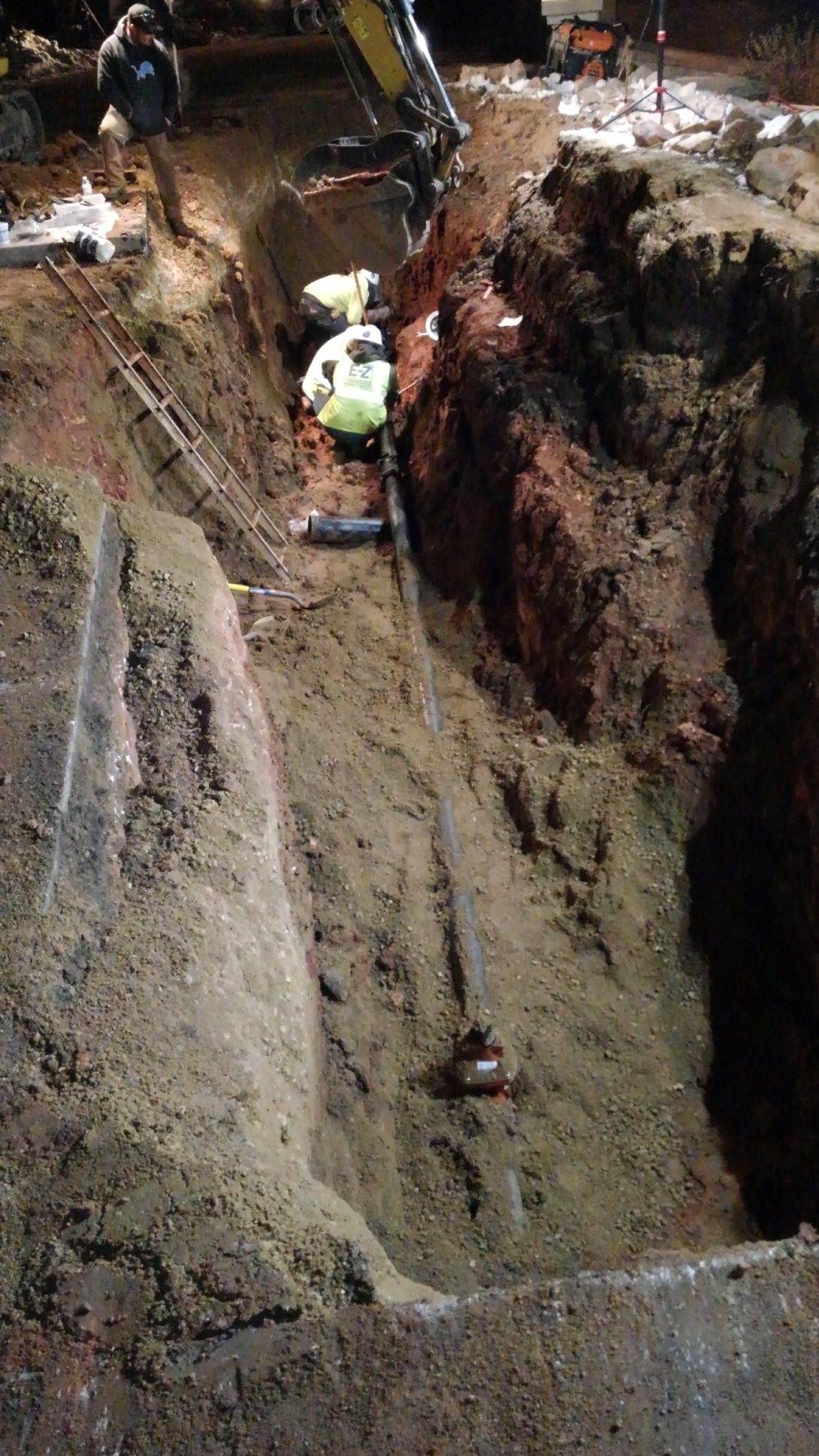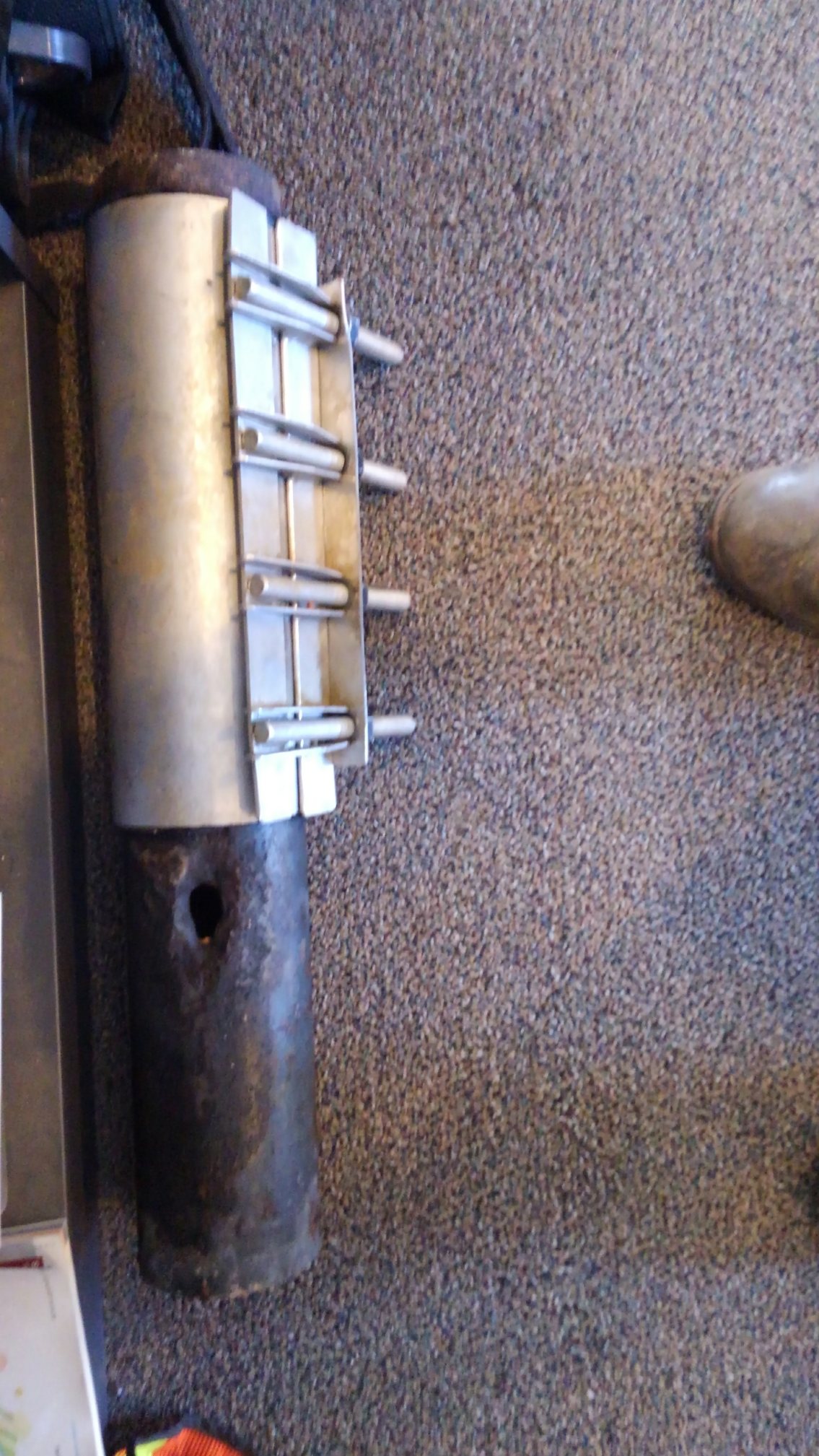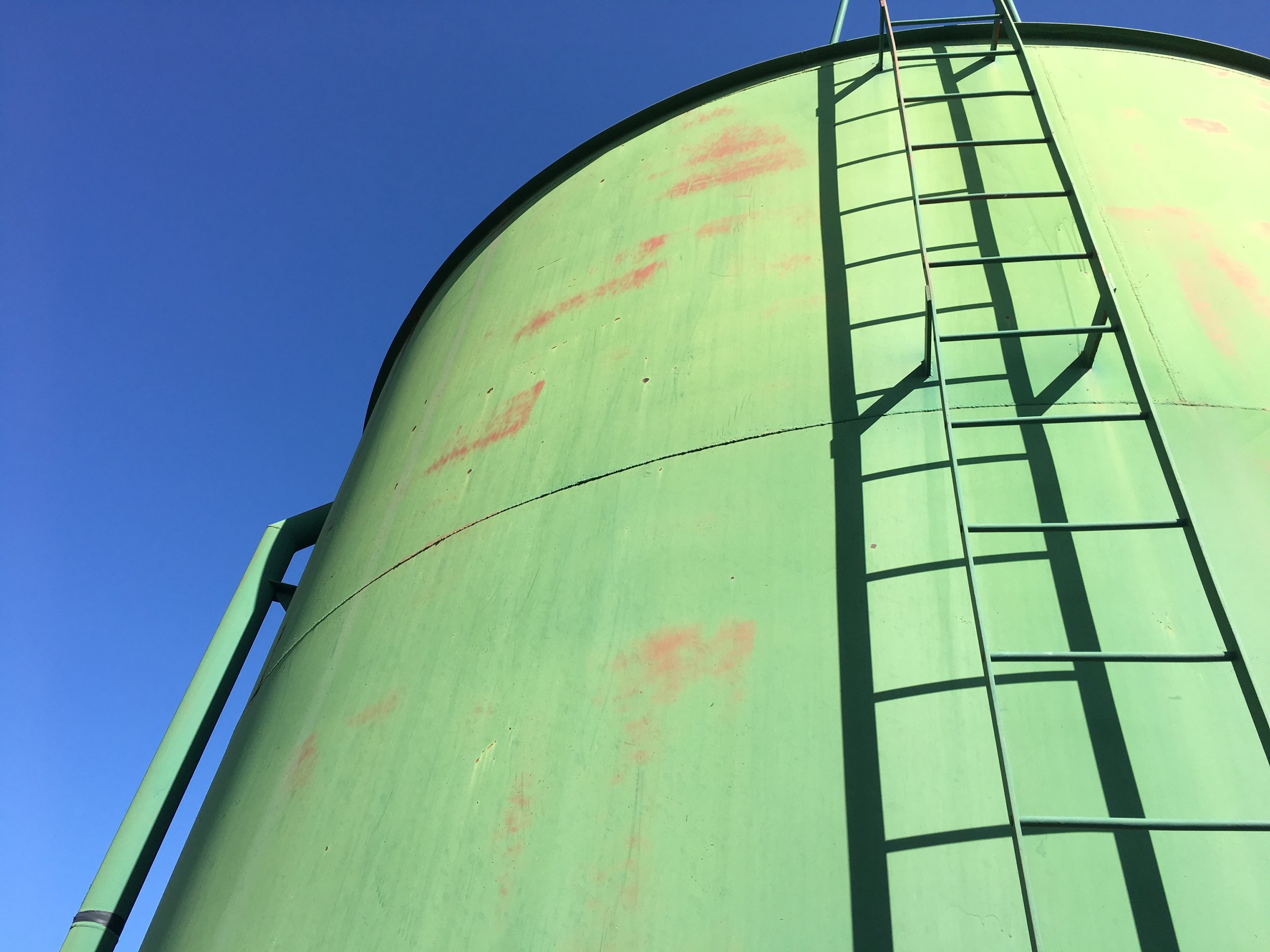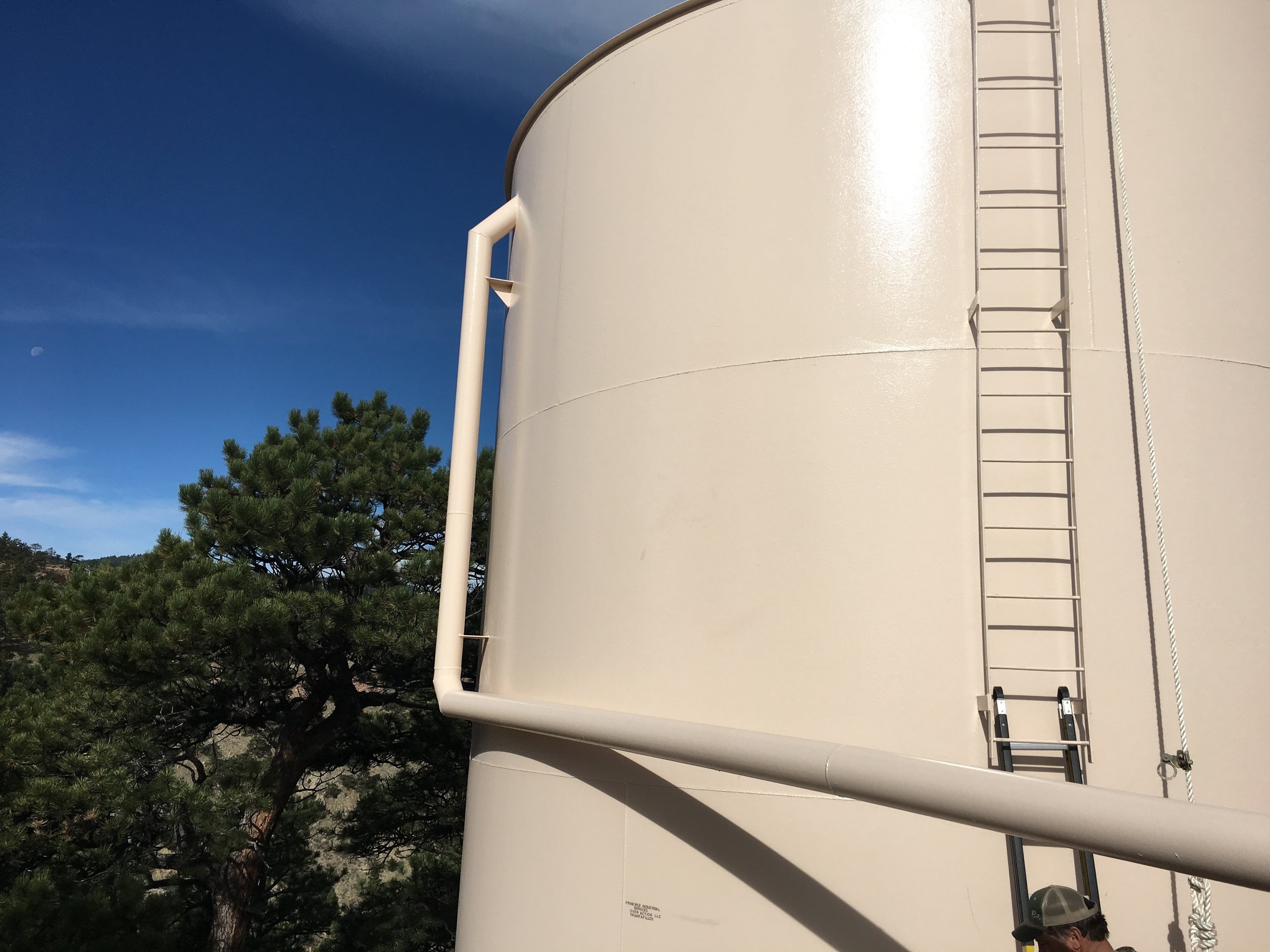NEWS
As fall turns to winter without any real snowfall in Pine Brook Hills, you may begin to question where your water supply comes from and how secure it is from the ongoing drought. Pine Brook Water District (the District) has worked hard throughout the years to create a diverse water portfolio to adequately plan for current and future water use.
The District has approximately 340 acre feet (the amount of water it would take to fill an acre of land to a depth of one foot) of water rights per year. The majority of these water rights are for water in Fourmile Creek which is tributary to Boulder Creek and are very senior. Water rights in Colorado are based on seniority – “First in Time, First in Right.” When our rights are in priority and we decide it’s a good time to move water, water is pumped from Fourmile up to an intermediary pump station in Sunshine Canyon. From there it is pumped again to the top of Bristlecone where it flows down the natural Two Mile creek drainage into the Pine Brook Reservoir.
The reservoir was put into service in 2006 and holds approximately 100 acre feet of water. In water year 2021 (October 1, 2020 – October 1, 2021), the district fed approximately 98 acre feet of water into the treatment plant and delivered approximately 86 acre feet of water out to the distribution system for use. The losses in the plant are due to normal maintenance use. We therefore have approximately 1 year of supply in the reservoir, when full.
Each spring the District monitors drought conditions and decides if watering restrictions are necessary. The District estimates that with the most aggressive watering restrictions (no outdoor watering), and minimal refilling of the reservoir, that we could go for at least 5 years (and likely longer) before the reservoir would be empty. Since construction of the reservoir, watering restrictions have never been implemented.
There are currently 416 homes connected to water service from the District, another handful that have the option to include into the District if they want service in the future, and approximately 20 lots left in Pine Brook Hills. Given our robust water portfolio and storage, the District is confident it can continue to supply ample safe drinking water even given the challenges of a dryer Colorado.
Over the last year (Fall 2020 to Summer 2021), Pine Brook Water has worked alongside a vendor to implement a system-wide monitoring and control system. With this system, PBW personnel are able to see the status of each of our five tanks, the level of the creek where we draw our water, and turn on pumps or open/shut valves from either the office or from a mobile app. The system can send alarms if tanks are dropping faster than normal or if tank levels drop below set points, alerting personnel to problems before tanks run dry.
Several public safety agencies have piggybacked onto our system with flood alert monitoring on 4-Mile Creek (which feeds into Boulder Canyon) and Fourmile Canyon Creek which is to our North. If these creeks begin rising quickly, indicating a possible flood, text and email alerts will go to fire leaders, and flood managers to alert them of the possible hazard.
In October 2021, the tank monitoring system proved effective for a hard to locate water leak on South Cedar Brook Road. Daily usage patterns seemed to indicate that approximately 24 gallons of water per minute were going missing. This number held steady for multiple days with no reports of water coming through the street. PBW personnel read the meters in the suspect area and didn’t find high usage at any house - this seemed to indicate that there was indeed a leak out in the main somewhere.
Using our acoustic leak detection equipment, a leak survey was performed and a suspect area was identified. Sensitive ground microphones were employed to further pinpoint the exact location. It was then noticed that water was indeed surfacing off to the side of the roadway, 30 feet down a steep embankment from the area in question. Excavation was scheduled and a water main break was found within one foot of the area identified.
The images below show 1. The result of the leak survey with a spike showing the location of the suspected break. 2. The chart of usage from Tank R2 (Meadowlook) showing high usage and then flattening off immediately after the leak was fixed.
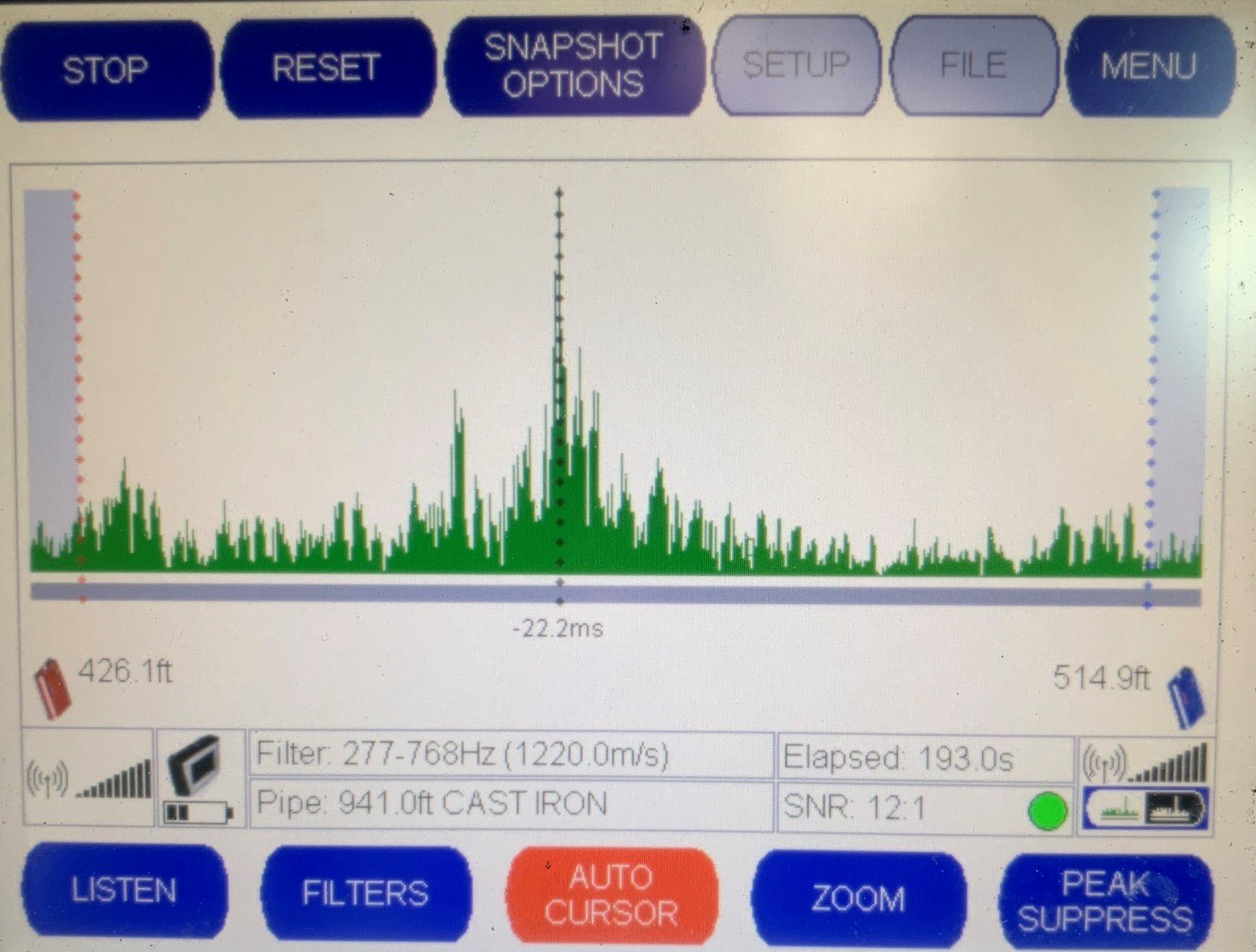

Recently we have been seeing an increasing number of service line leaks. As a reminder, Pine Brook Water is responsible for the water line from the main to the meter pit, including the meter itself. The line from the meter pit to your house is owned by you and you are responsible for any water lost (though a leak rate may apply), fixing any leak, or replacement if necessary.
Many of the service lines in Pine Brook were installed using improper practices (directly on rock, rock backfill), or with improper materials (Sprinkler pipe, PVC, etc.) and with our challenging soil conditions they are reaching their end of life. If you think you may have a service line leak (unexplained high bill), contact us to come check your meter. We’ll ask you to turn off the water inside your house and then check for usage at the meter. Usage at the meter with the house shut off may indicate a leak in the service line.
The next step from there would be contacting a company that specializes in leak detection. There are several in the area and a post to the Pine Brook Forum will likely result in a good recommendation. From there, the decision is repairing the leak or replacing the line. A lot of that comes down to the material of the existing line (is it likely to just keep having issues?) and cost. Again, the Forum should provide some excellent references for companies for both repair and replacement.
Another thing to consider is contacting your insurance company about adding “Service Line Coverage” to your homeowners policy. Many companies have this available for a very reasonable annual cost and a low deductible with coverage that usually includes water line leaks. Check with your insurance carrier to be sure. There may also be options for home warranties that cover water line leaks.
Below are two images of service line leaks from the summer of 2021.
The first was a section of copper line that shows evidence of being smashed by a rock when it was installed in 1968. This leak lost approximately 70,000 gallons spanning two months.
The second shows a poly line that was worn through, likely by ground movement over sharp rocks. This leak lost approximately 78,000 gallons spanning two months. Photo credit to Anthony Robbins of “Waterline Repair & Replacement.”
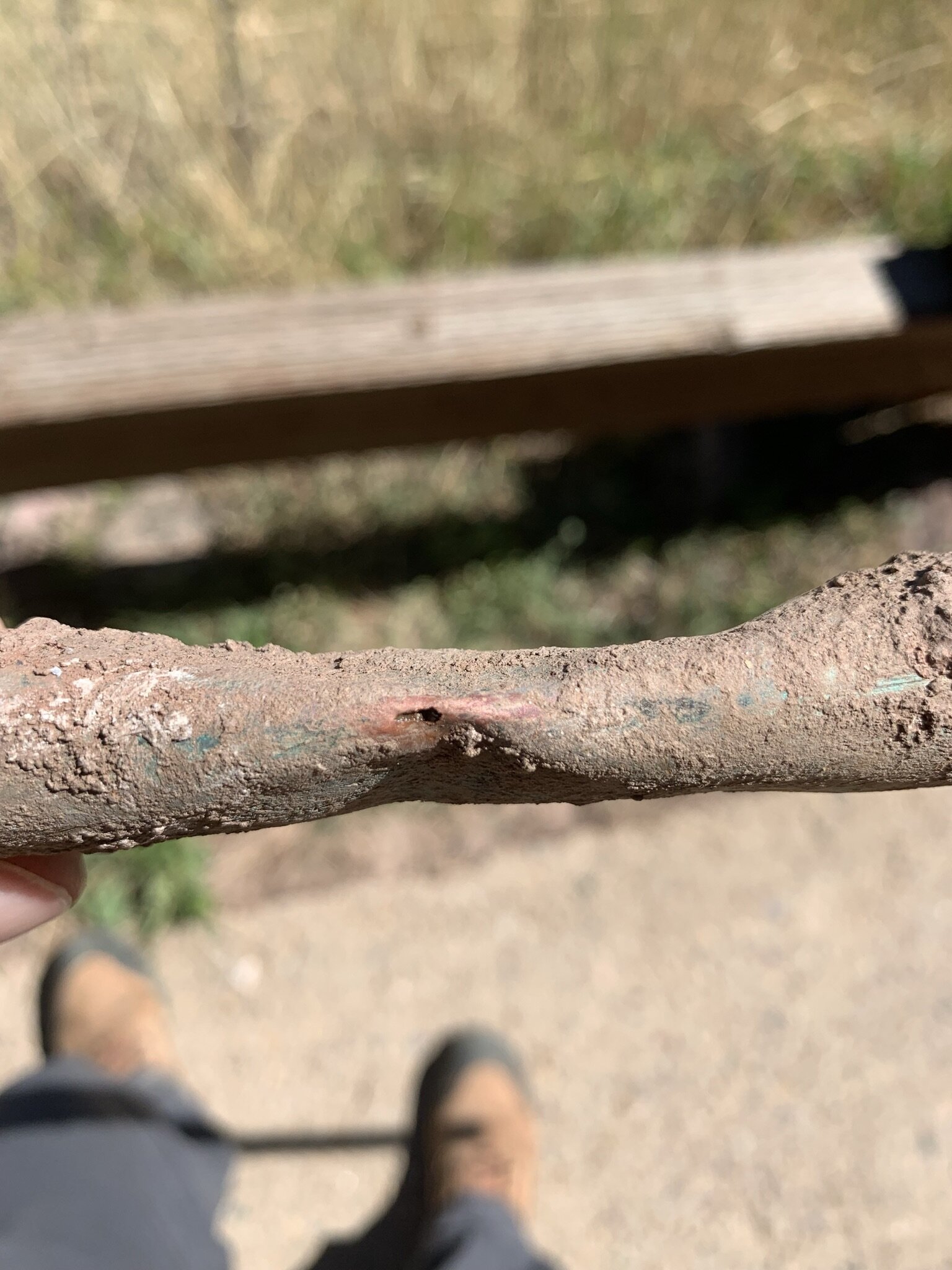
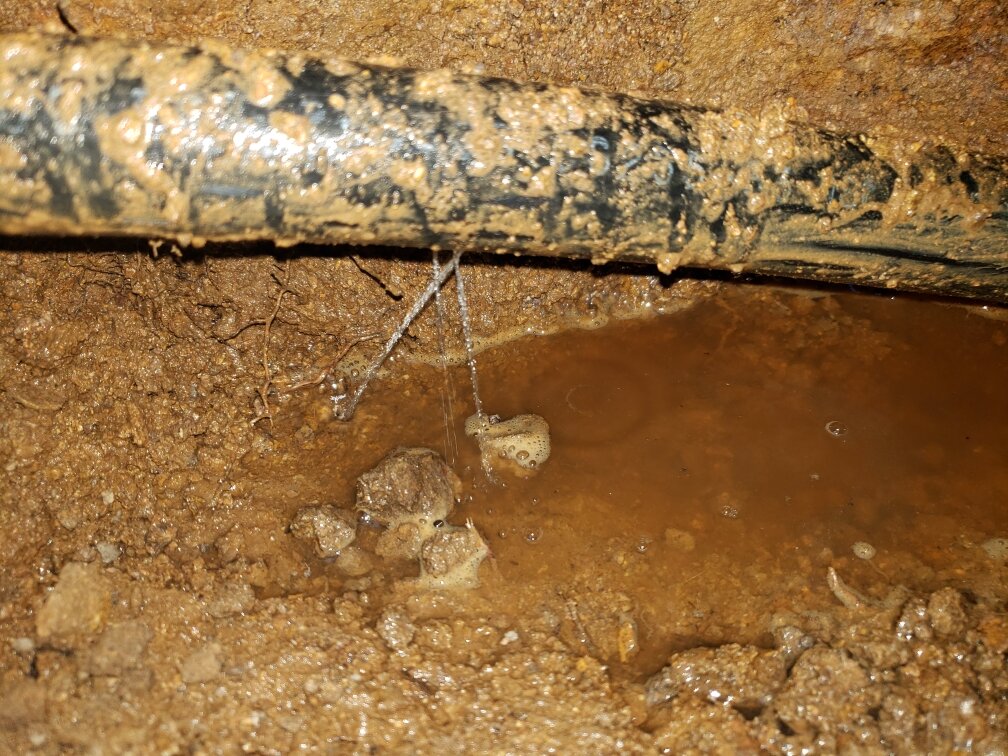
In 2021, Pine Brook Water District made significant improvements to the Sunshine Pumphouse. This facility is an intermediate pump station between the District’s major source of water in Four Mile Creek and where it dumps out into Two Mile Creek before flowing down to Pine Brook Reservoir. The Sunshine Pumphouse used to house Pine Brook’s water treatment plant prior to construction of the reservoir and current filter plant located next to the Community Center.
Major updates to this building were focused on improving both the aesthetics and fire survivability. Trees were limbed or removed by the Boulder Mountain Fire Mitigation Crew, juniper bushes against the building were removed, and Hardy Board Cement Siding was installed.
These improvements make the building look dramatically better to passersby and should make it significantly more likely to survive in the event of a wildland fire.
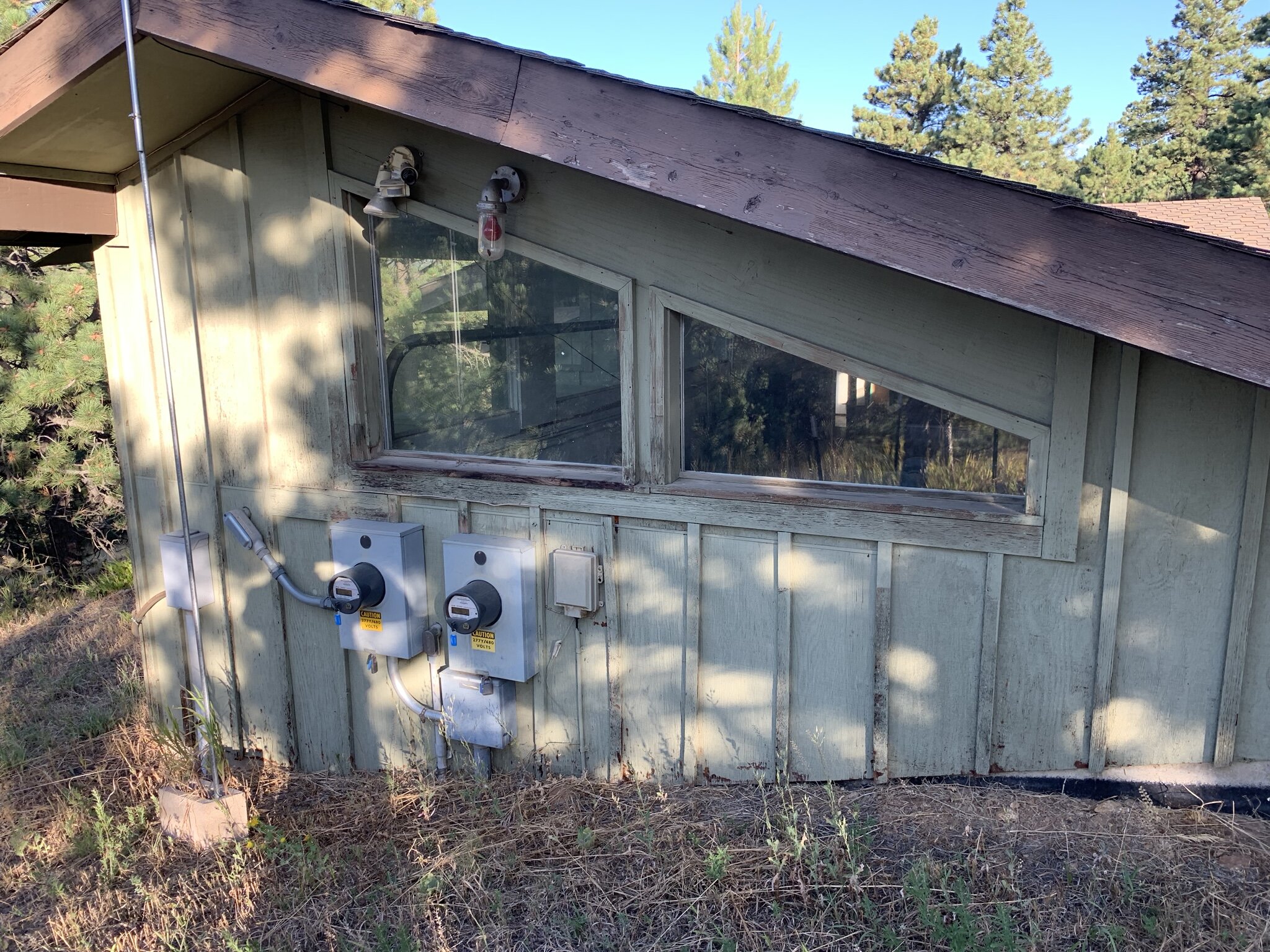
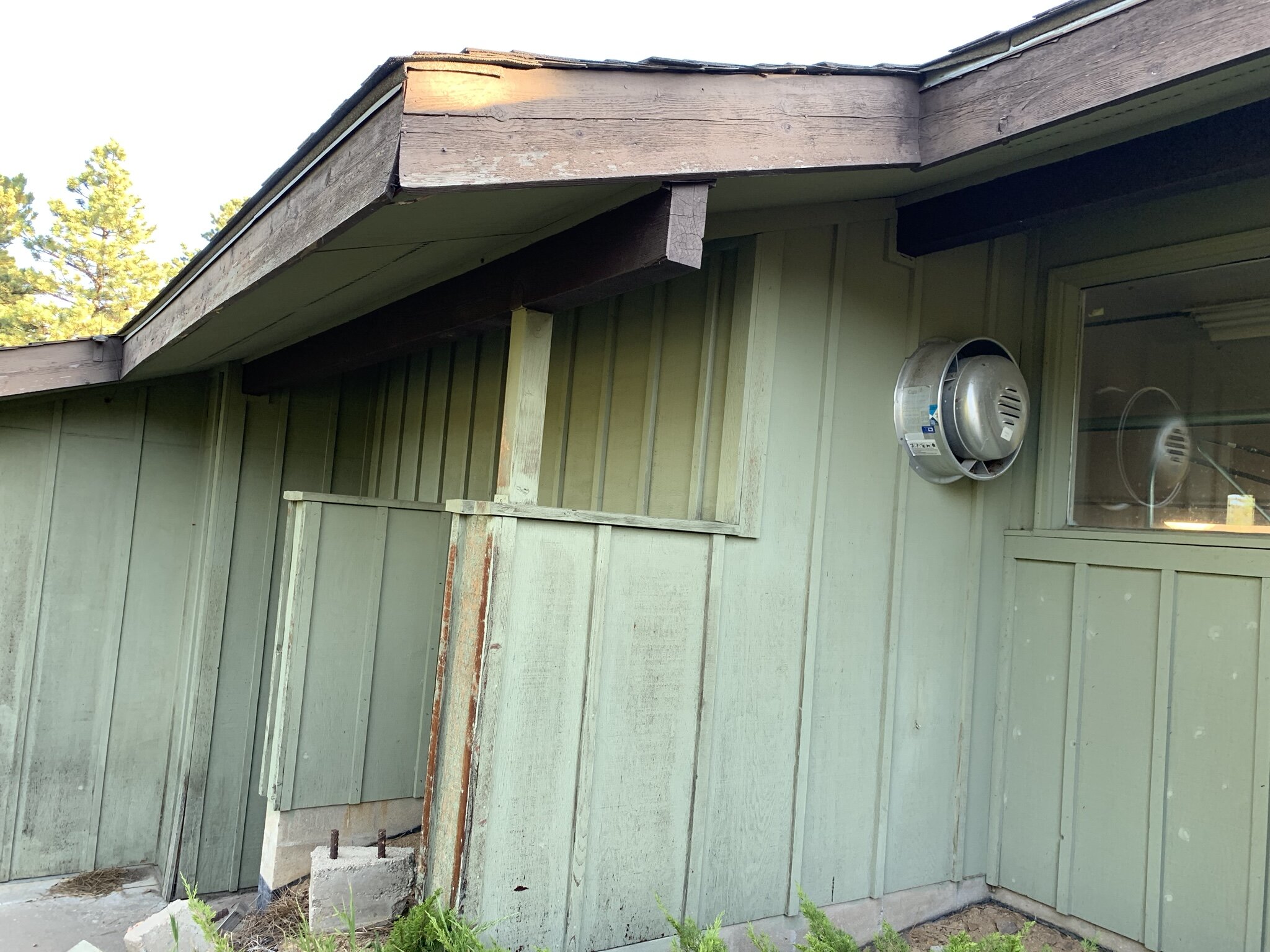

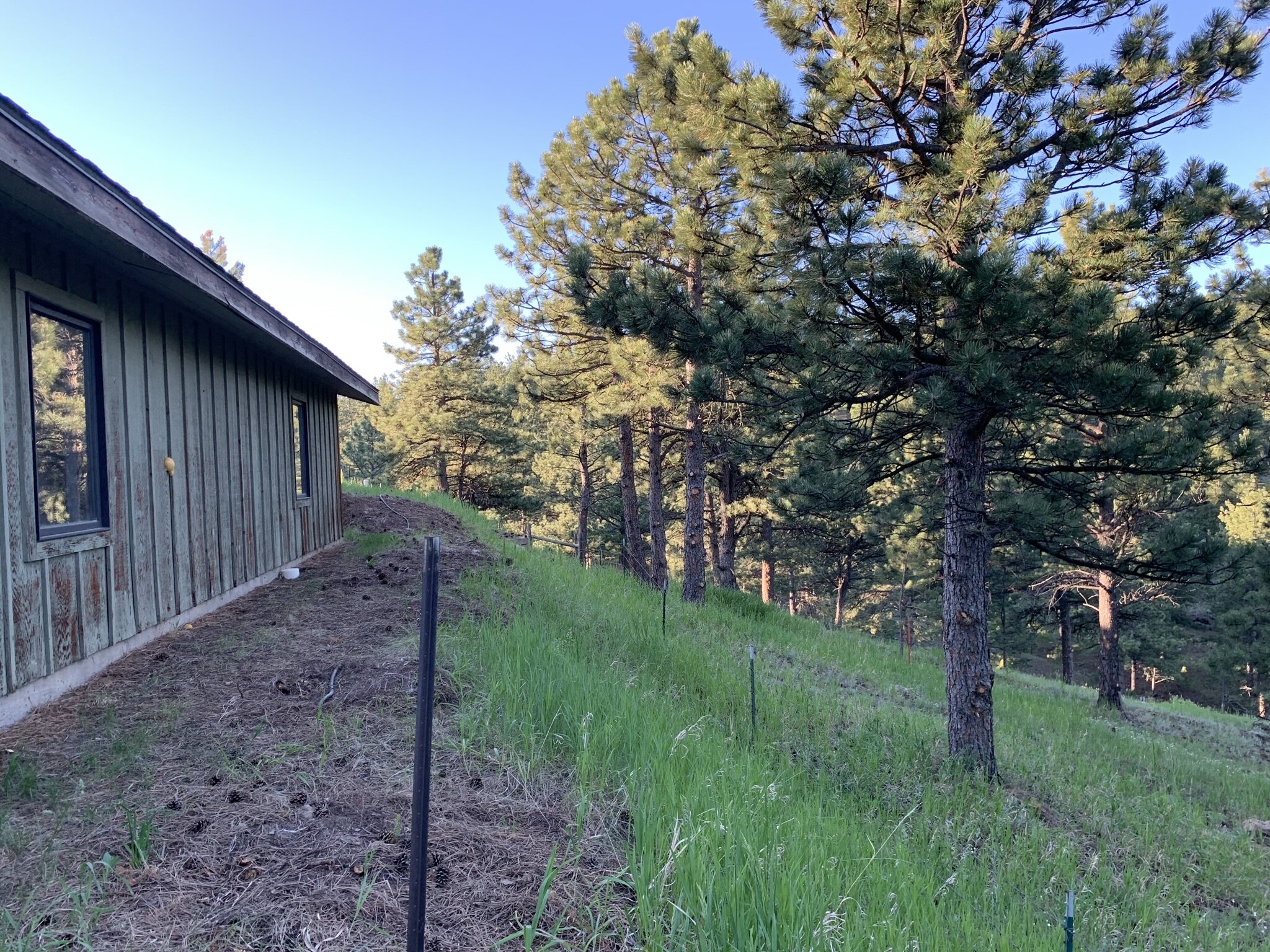
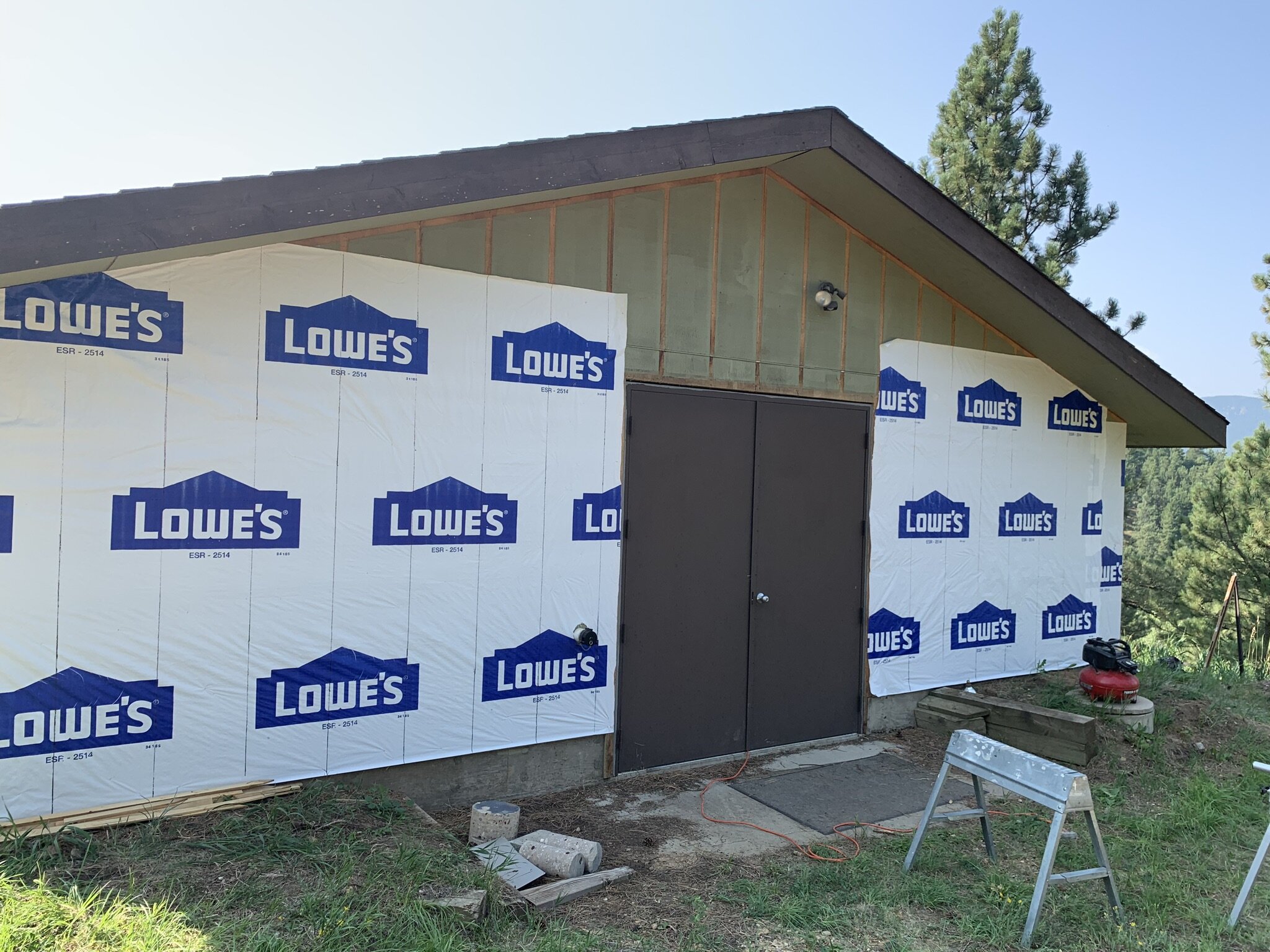
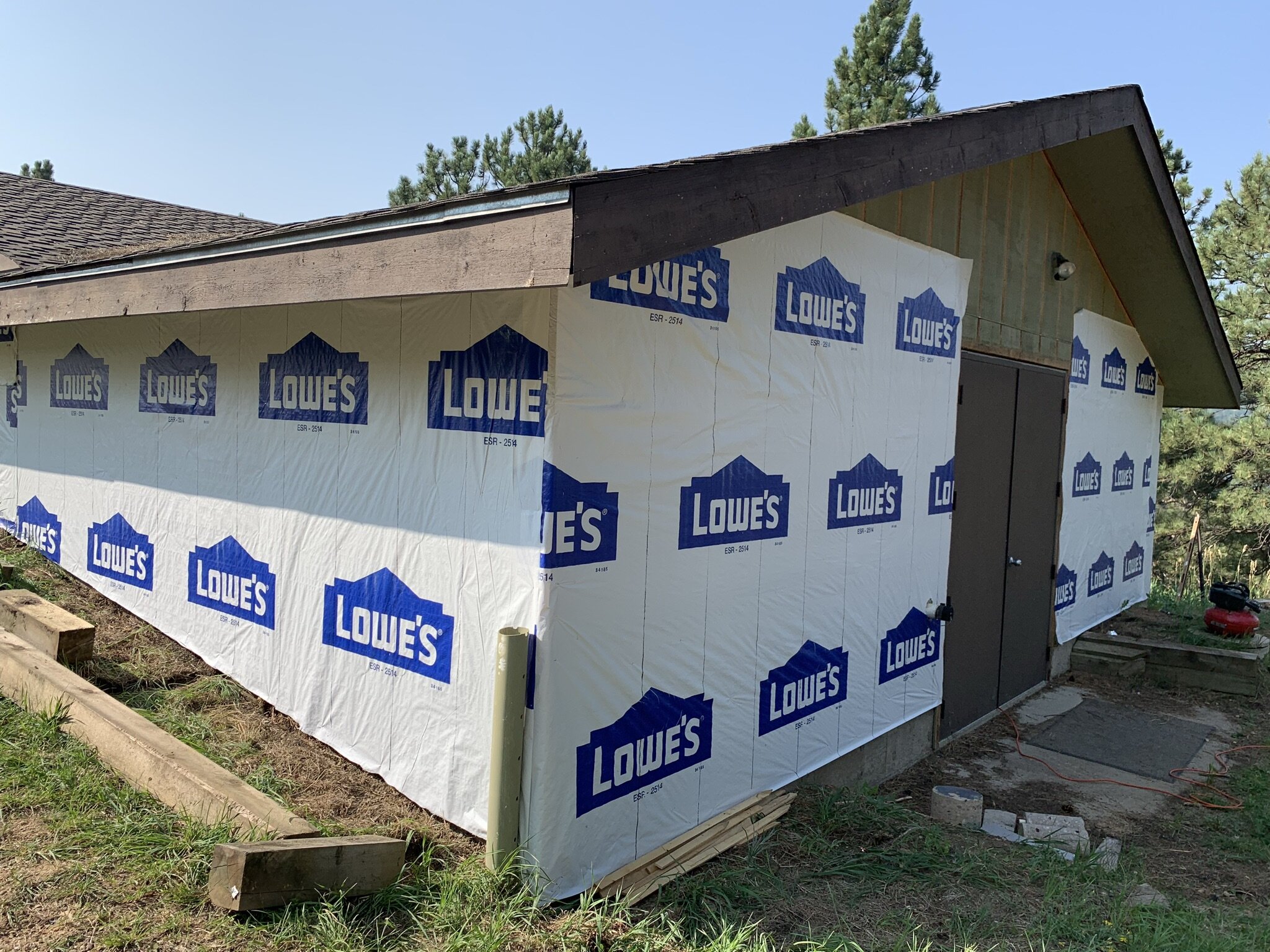
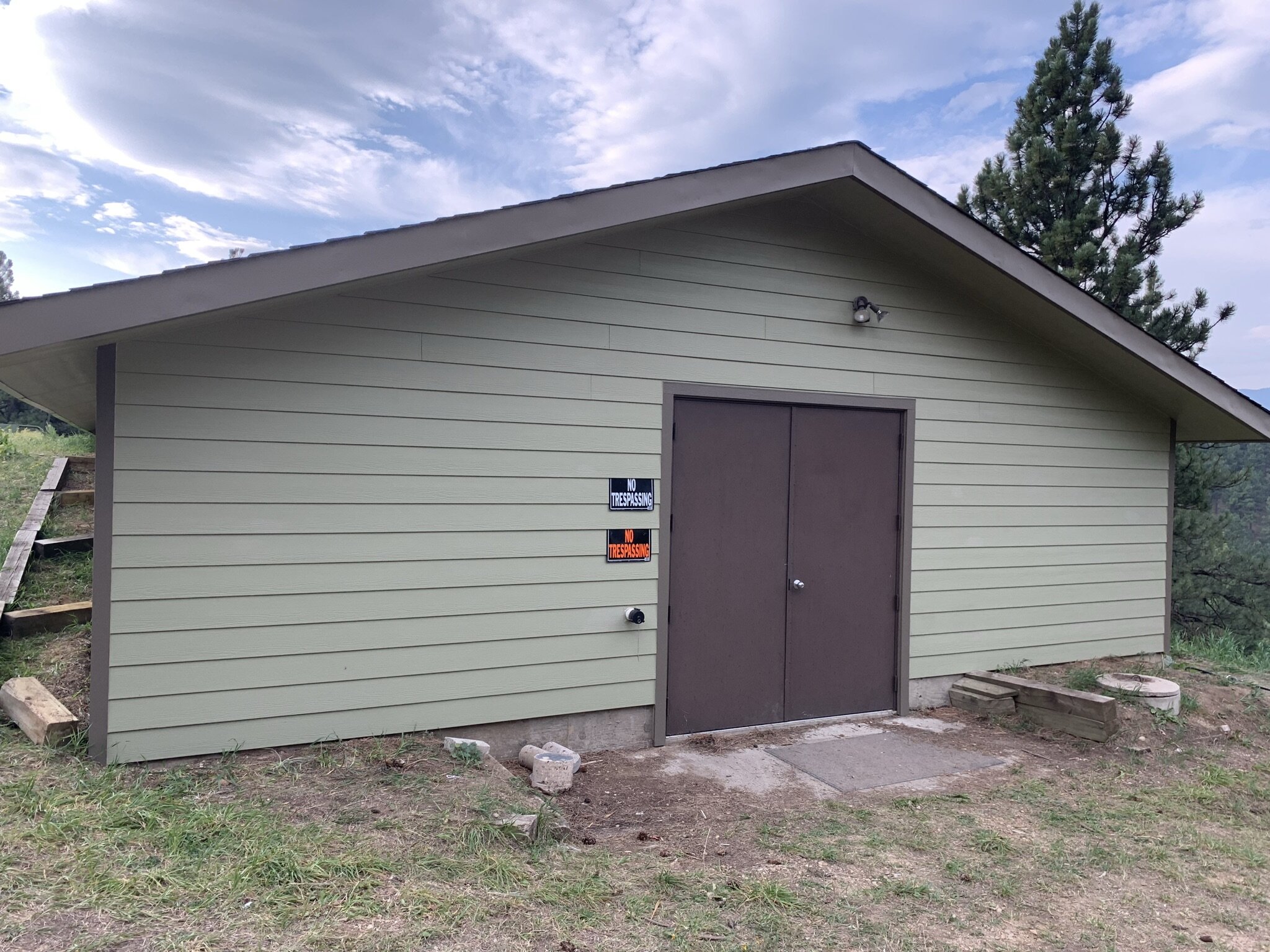

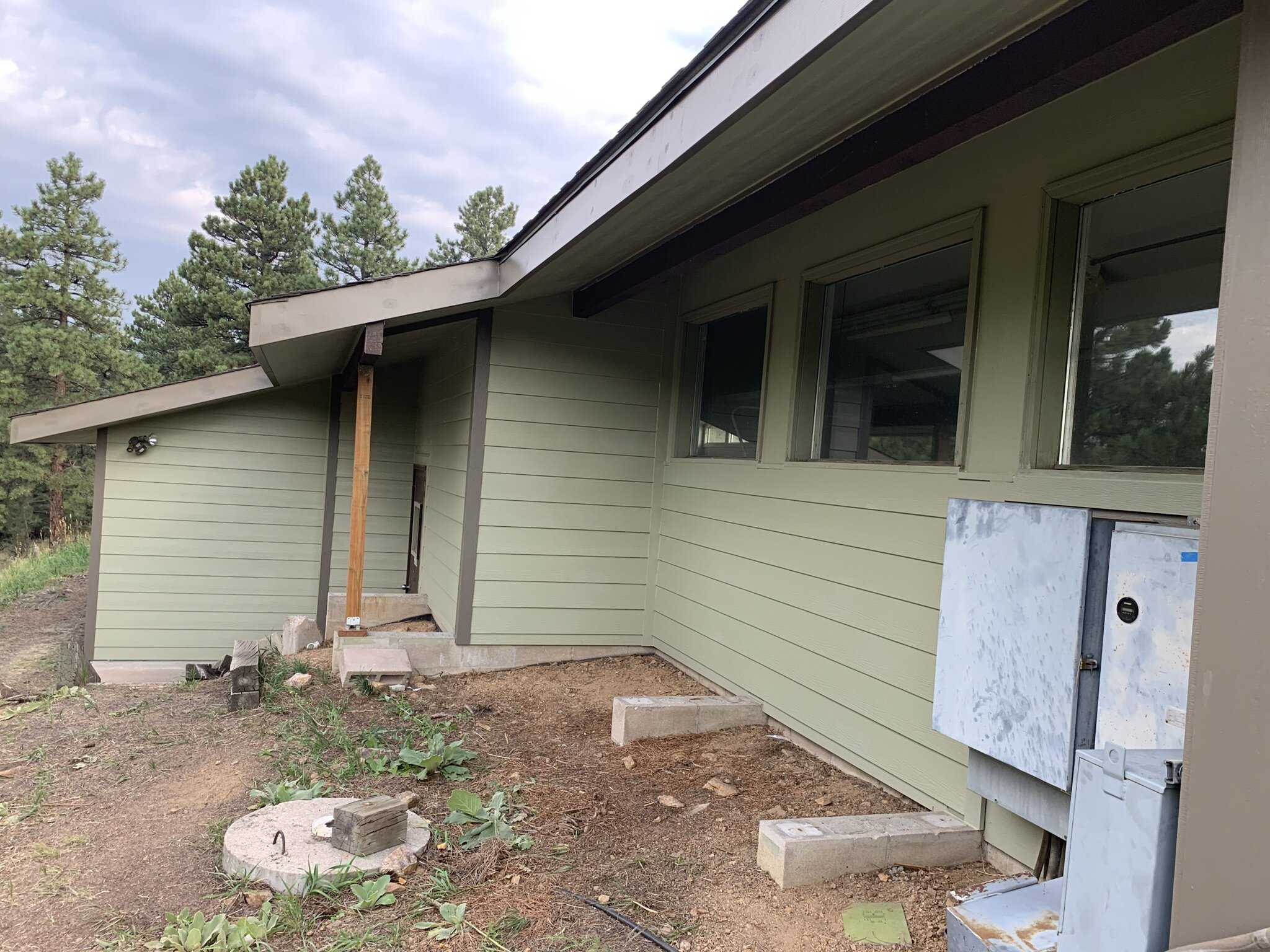
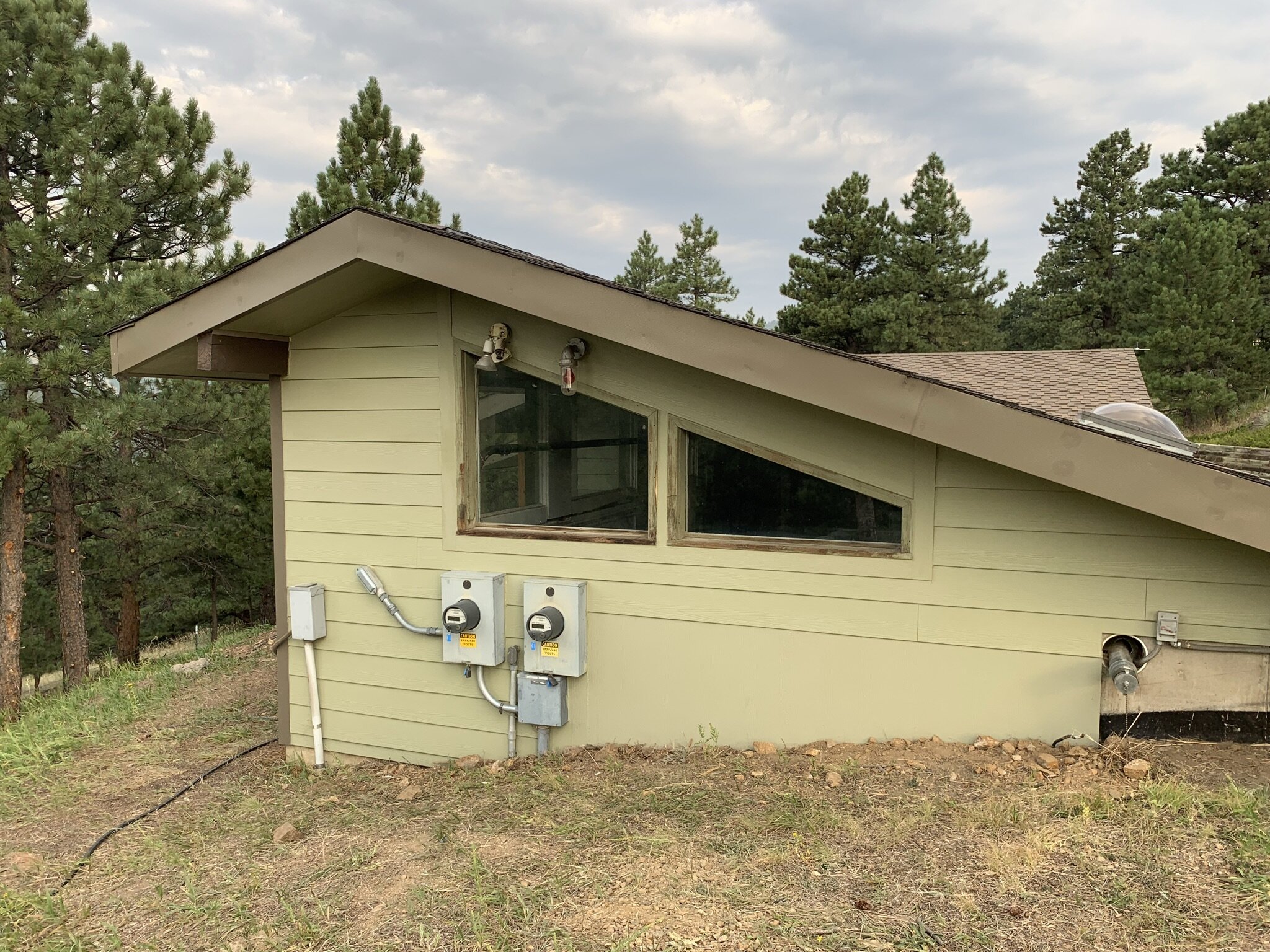
In the summer of 2021 Pine Brook Water District deconstructed three water tanks that were no longer in use. Each tank was in a state of disrepair and presented a hazard to residents and a liability to the District.
The first tank was an aboveground steel tank located on the end of Ridge Road. This tank sat on an easement on City of Boulder Open Space. When the District operated wells in the area, water was pumped into this tank for chlorination and then pumped up into the system. As the wells are now all plugged, the tank sat empty, the roof beams falling, and a crack had developed in the roof. The access ladder had been cut off to discourage trespasses by curious visitors but it still presented a hazard. To deconstruct this tank, the access road was improved allowing an excavator to access the tank. Then a welder used a cutting torch to cut sections of the tank into manageable sizes. When the time was right, the excavator was able to tilt the entire tank over allowing access to fully cut up the tank. the pieces of the tank were slid down the hill and then hauled off on a trailer for recycling. Finally, the site was graded, matted, and seeded.
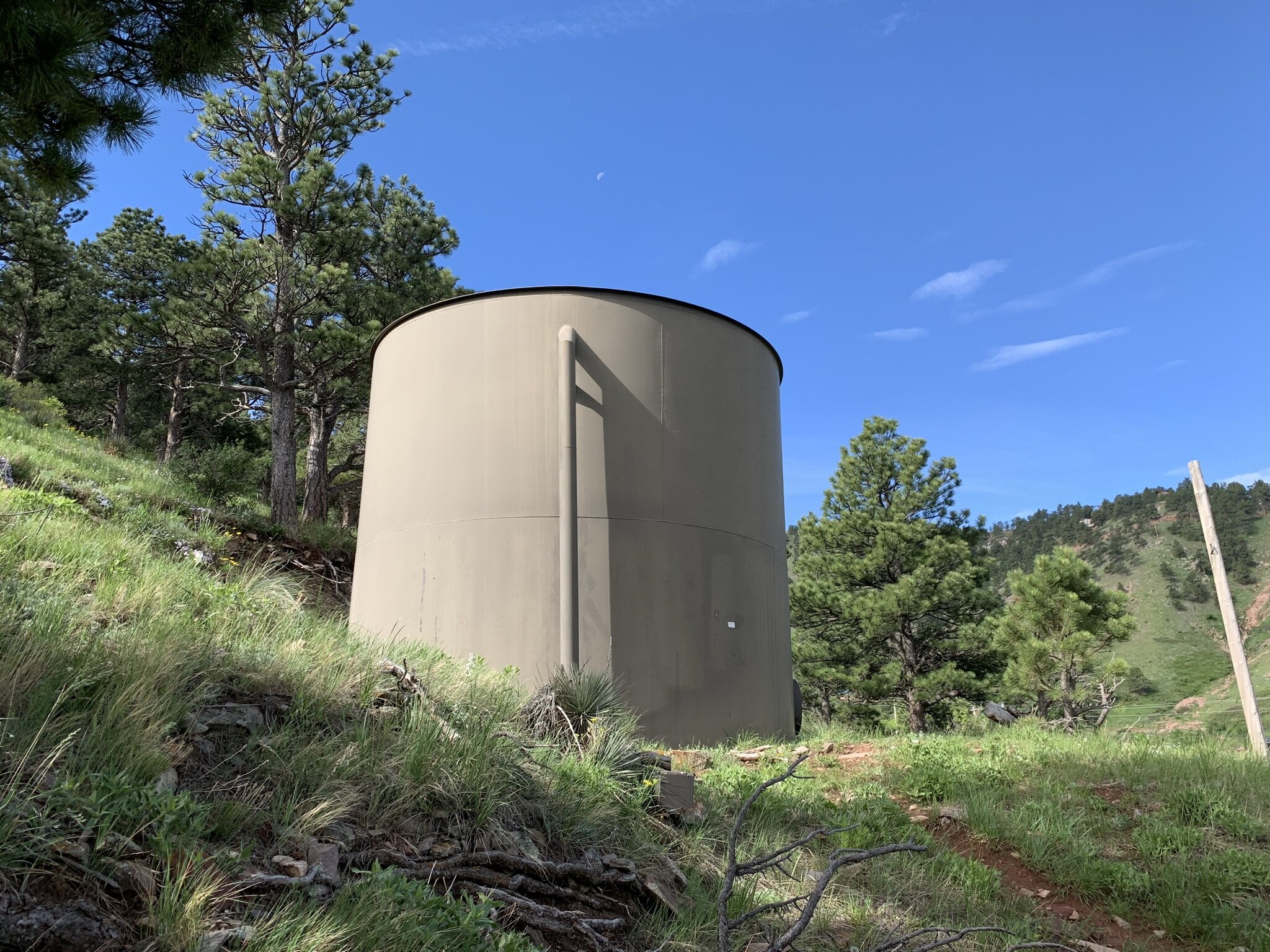


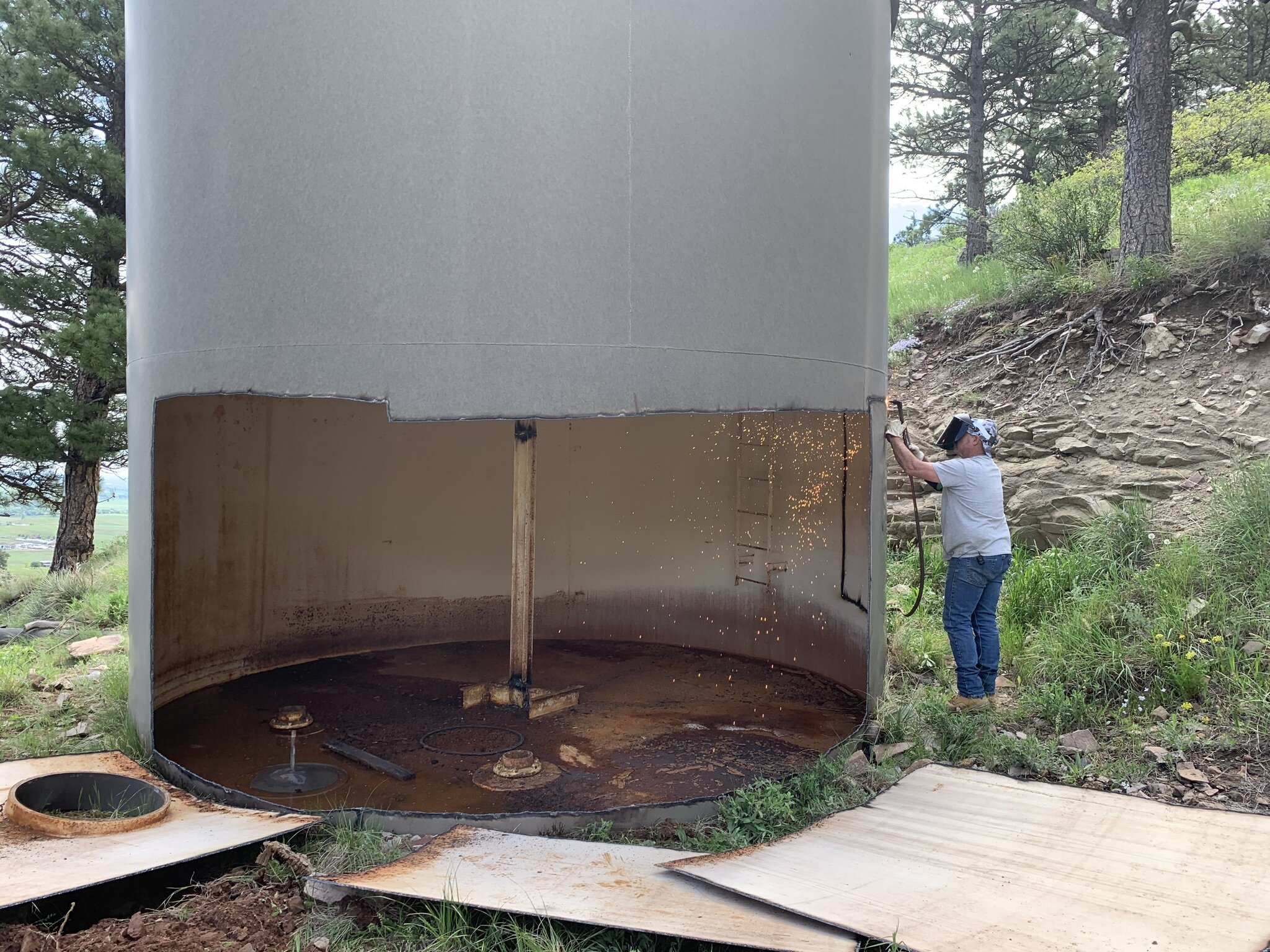
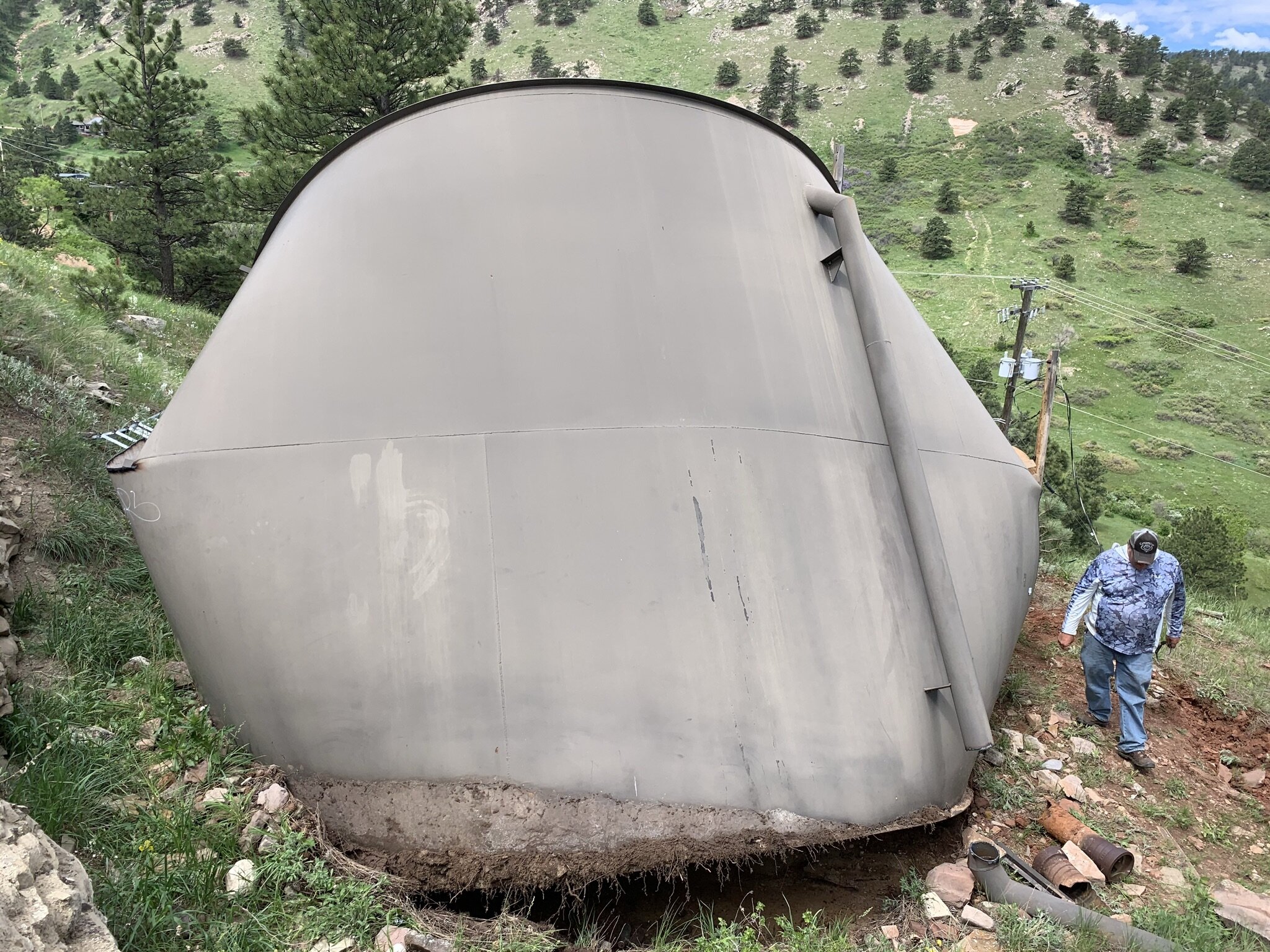
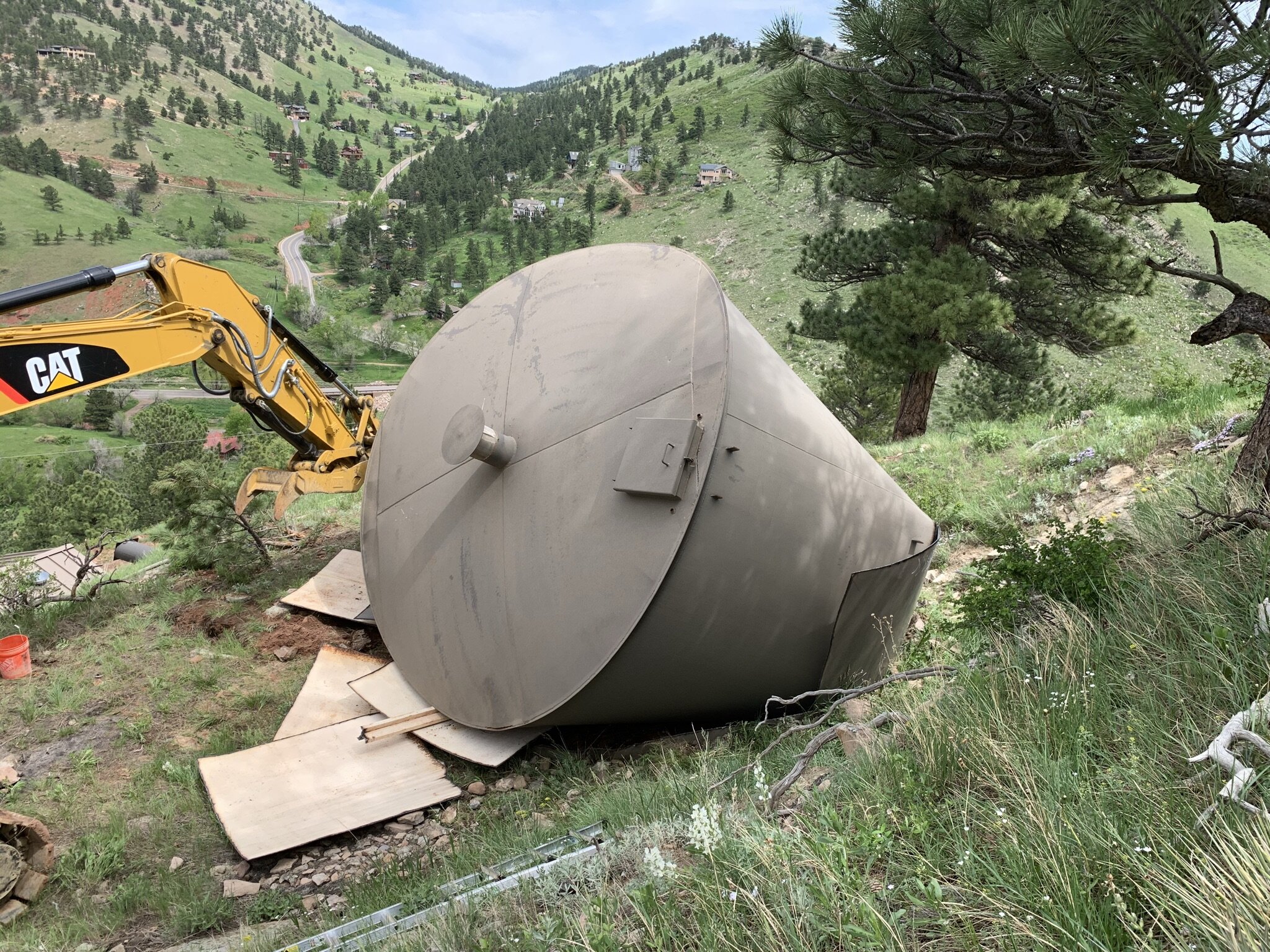

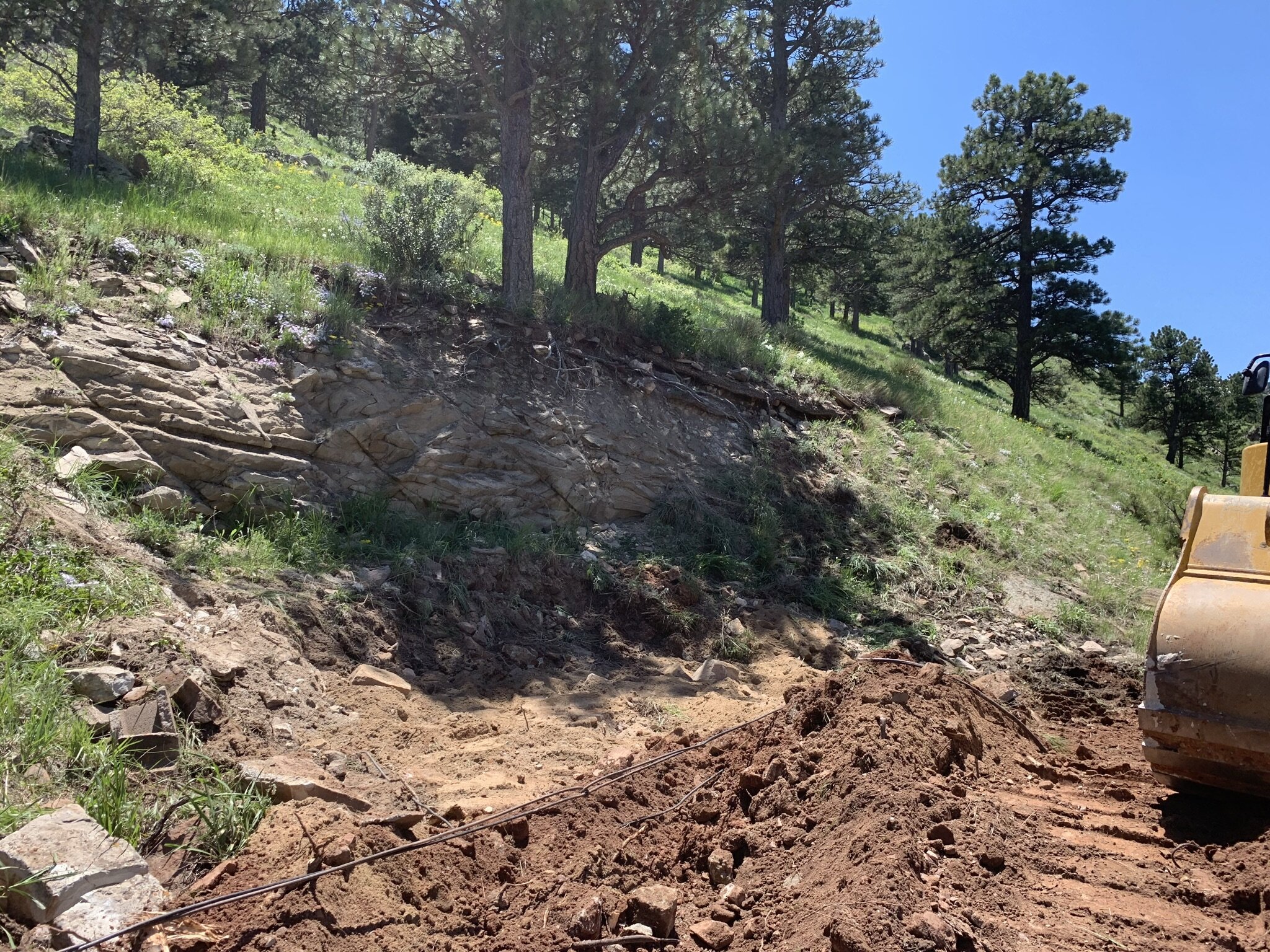
The second tank was an aboveground concrete tank that was originally part of the Fountain Tree Water system. When the District acquired this service area, this tank was kept in order to provide a backup source of water for fire protection. With the addition of a redundant water line (bored through the mountain from Wildwood to Fountain Tree), this backup source of water became unnecessary. The concrete on the tank was beginning to spall and deteriorate. To deconstruct this tank, a jackhammer was used to hammer the concrete into small chunks. The rebar was cut and hauled off for recycling and the concrete was buried within the tank to fill the hole left by the tank. Clean fill dirt was brought in to provide a means for vegetation to establish and the entire area was graded, matted, and seeded.
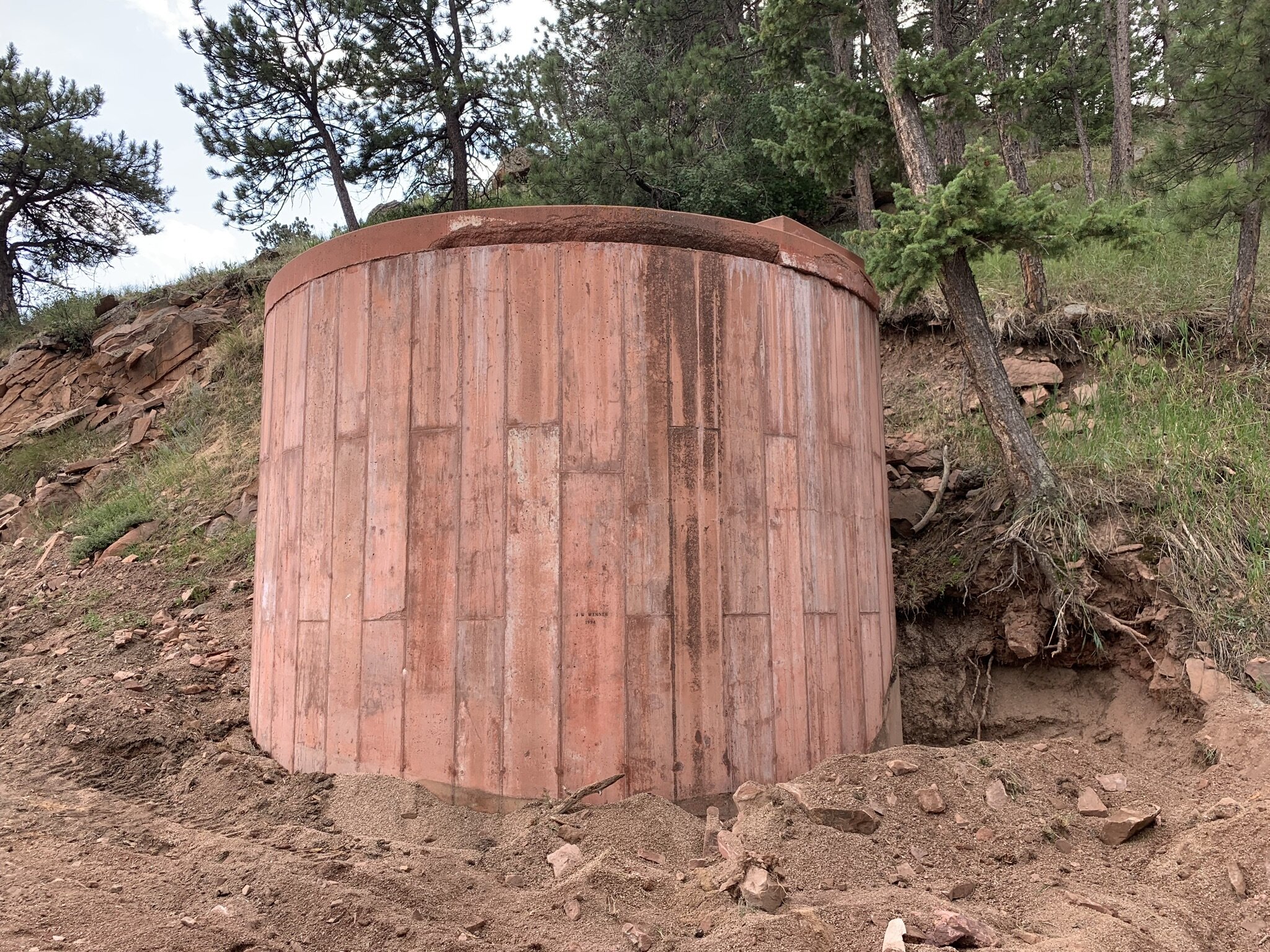
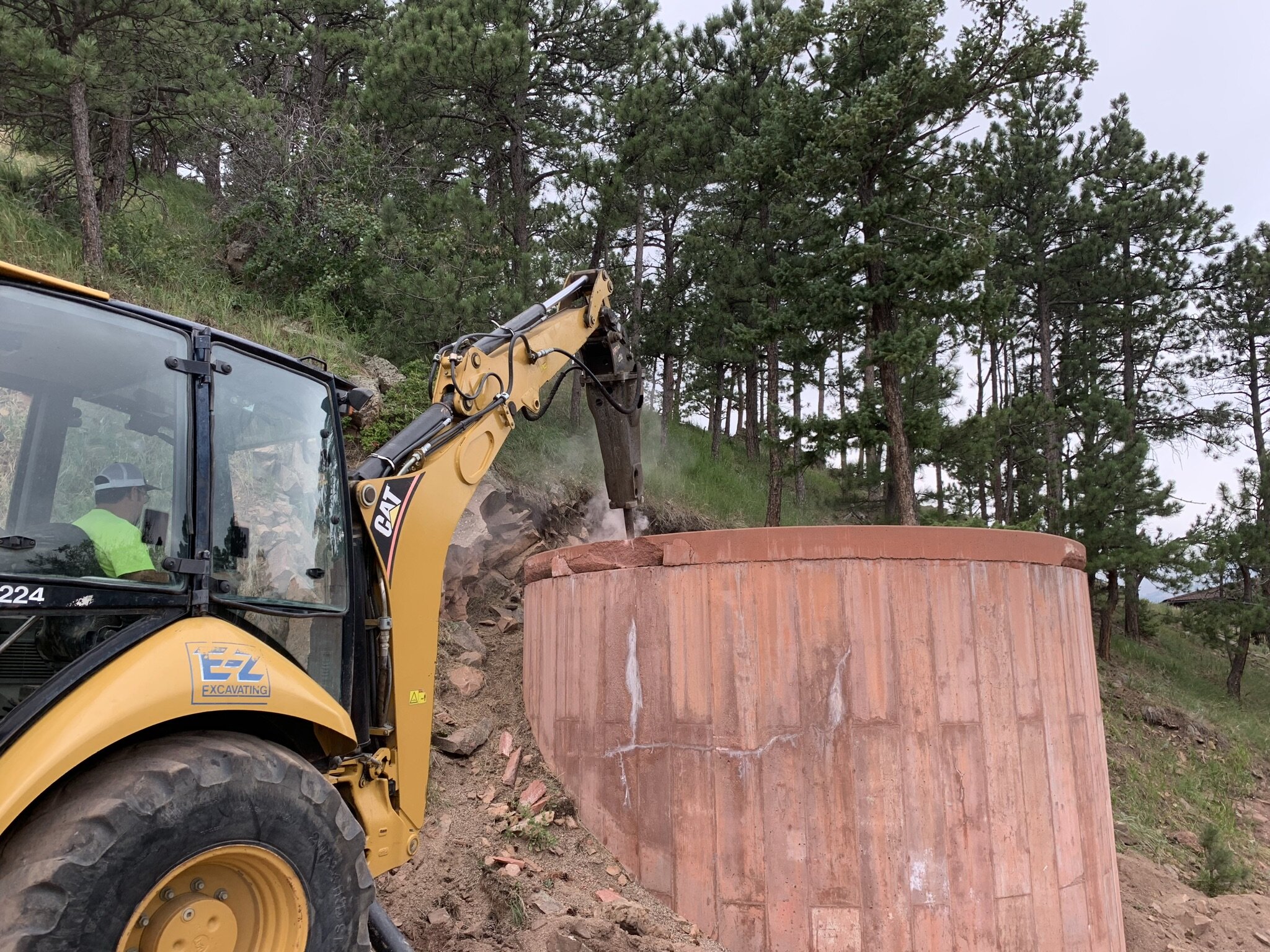
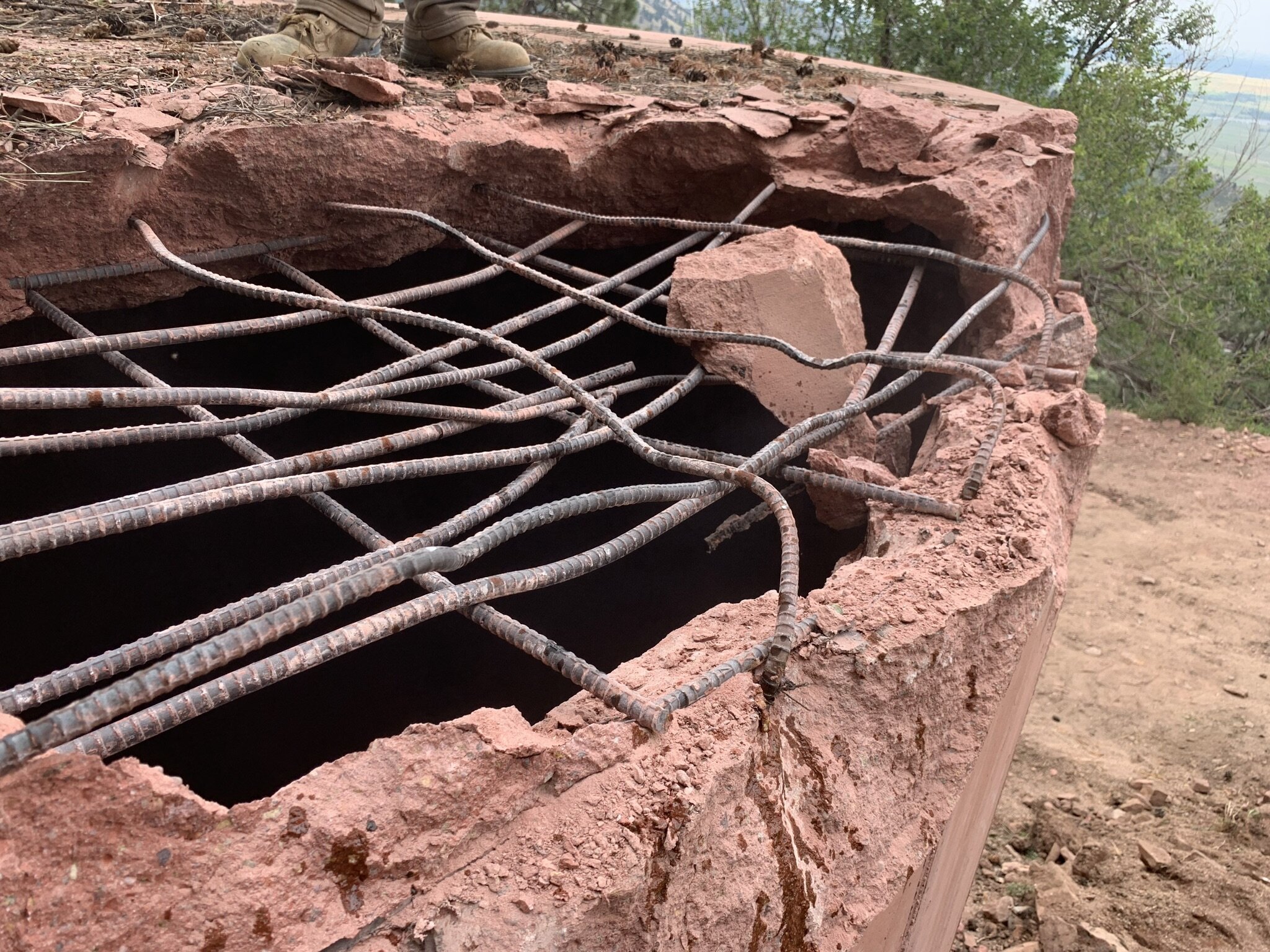
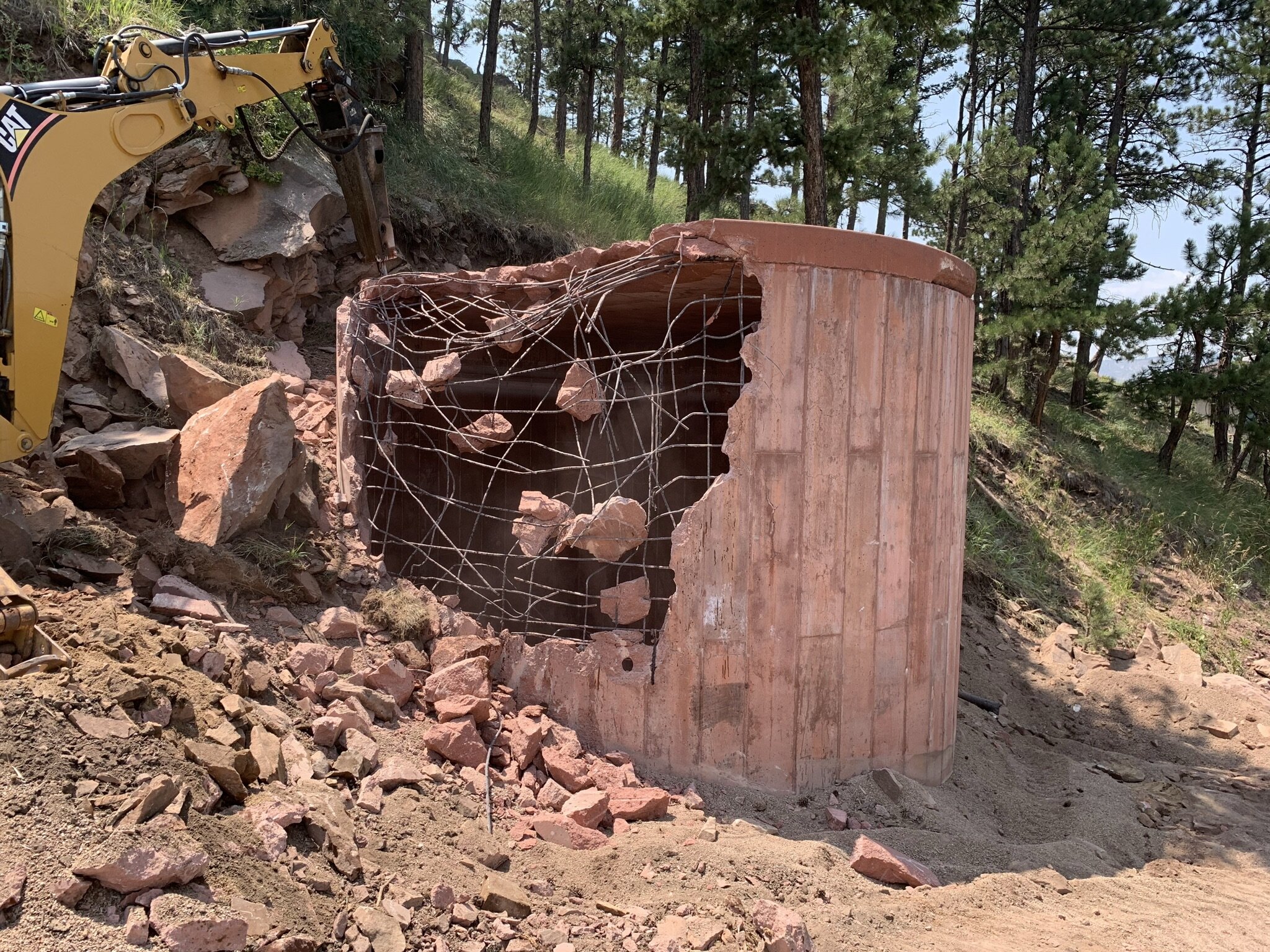
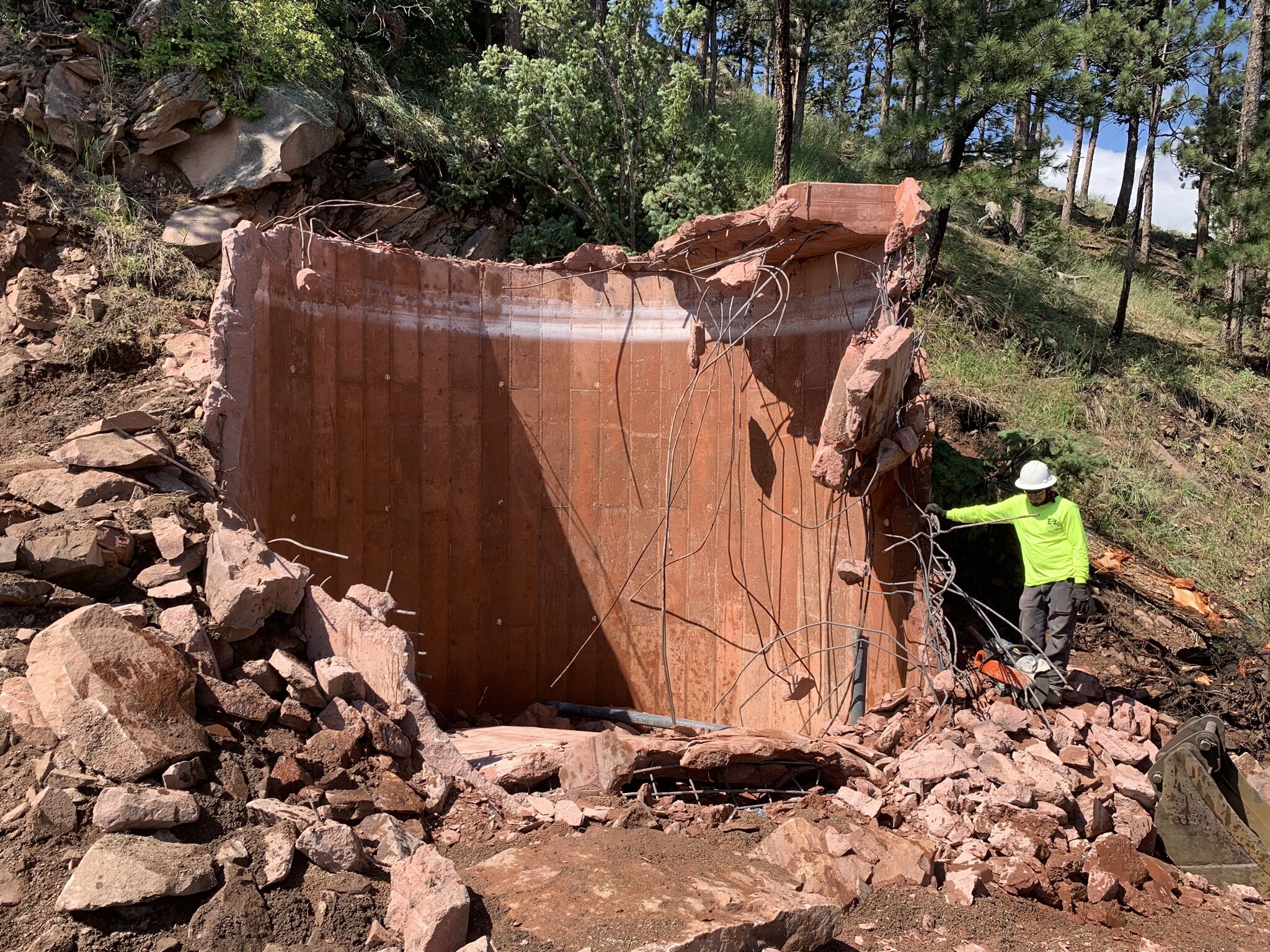

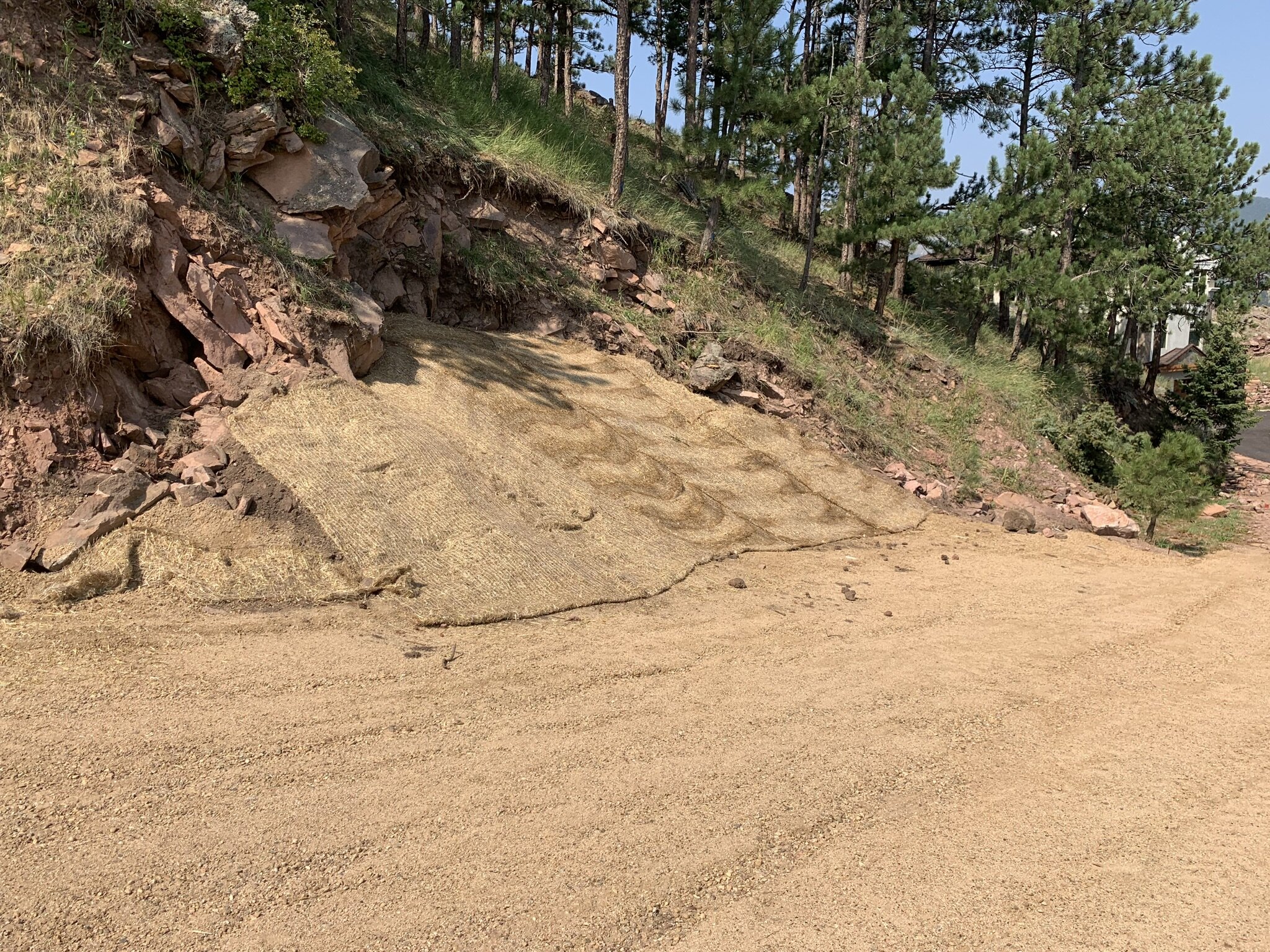
The final tank was a buried tank which was located at the end of Bristlecone near our current aboveground tank. This tank was part of the original system and was used until the early 1980s when it was replaced with the currently used 600,000 gallon aboveground tank. The District had concerns about the integrity of this tank and that it may collapse suddenly and without warning. The process for deconstructing this tank required first exposing the entire roof of the tank which revealed two surprises. First, the tank was much longer than anyone knew, and two, the roof had a deformity which indicated that the structure was possibly beginning to fail! Once exposed, the welder cut the roof off the tank and fill material was packed inside. The area was graded, matted, and seeded. The District also took this opportunity to add a new fire hydrant on the water line that used to connect to this tank. This line will not only bolster firefighting capability, but provide a means hooking up a temporary tank to the system when the larger tank on site needs to be maintained in the future.
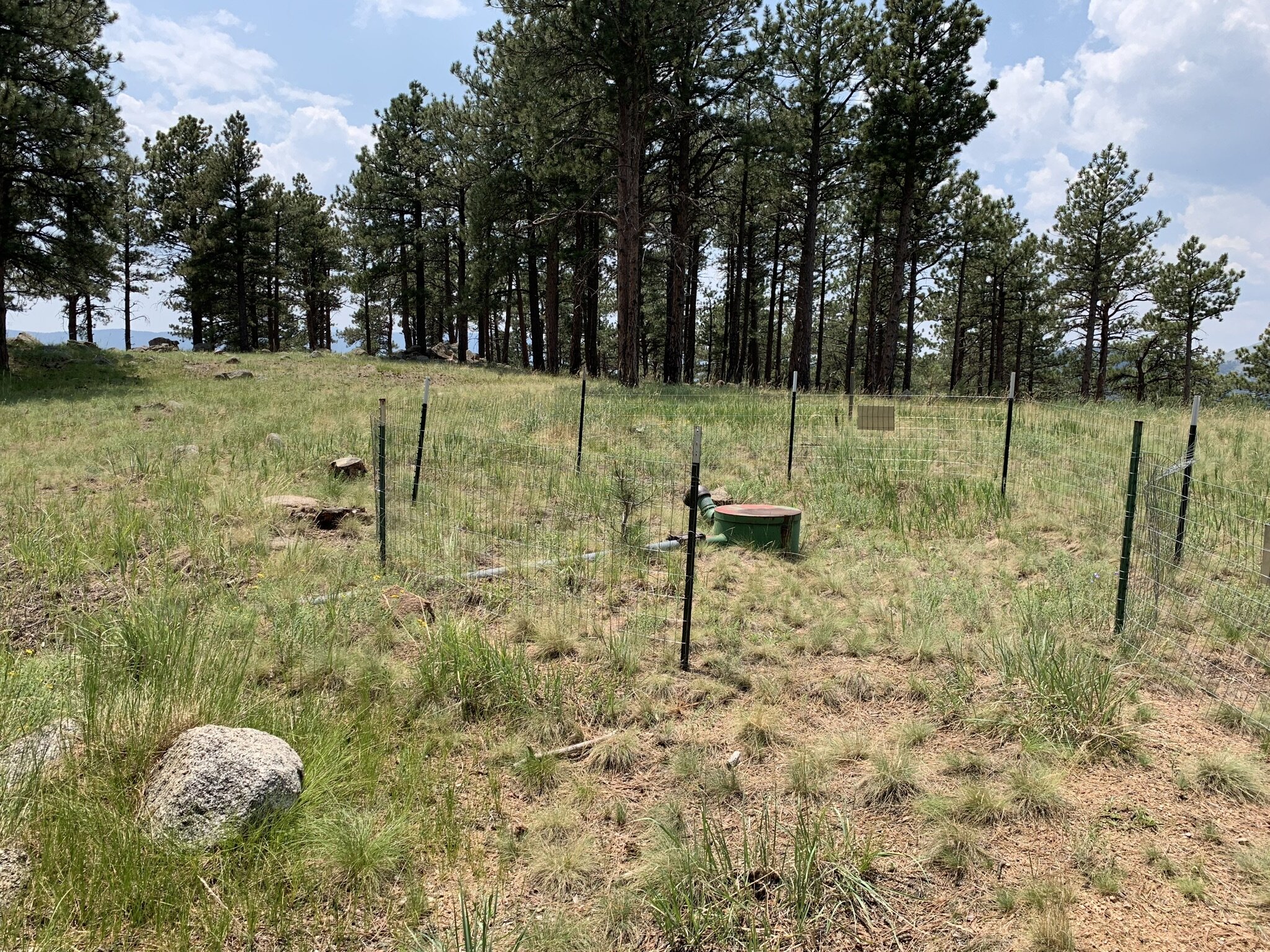
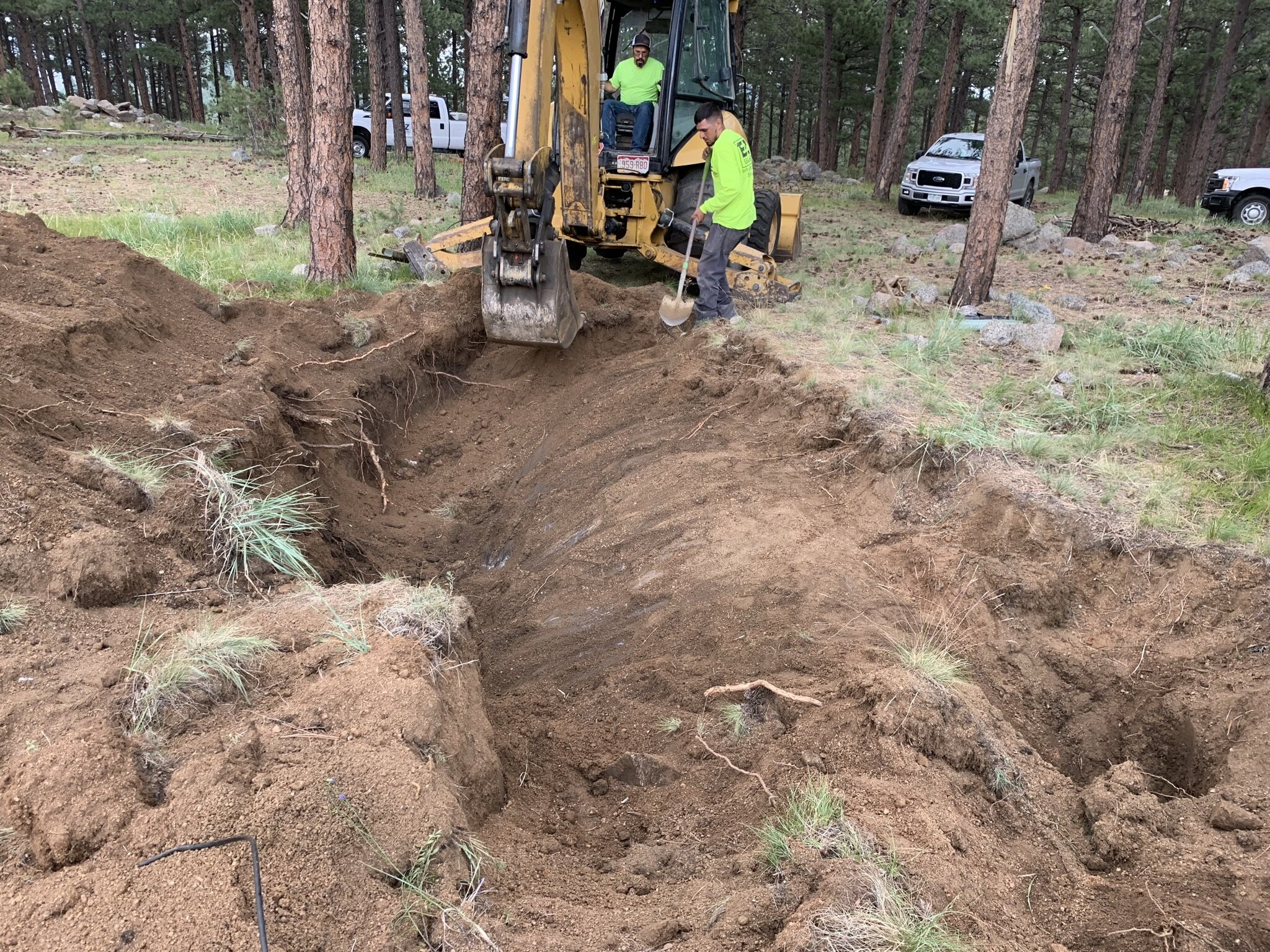

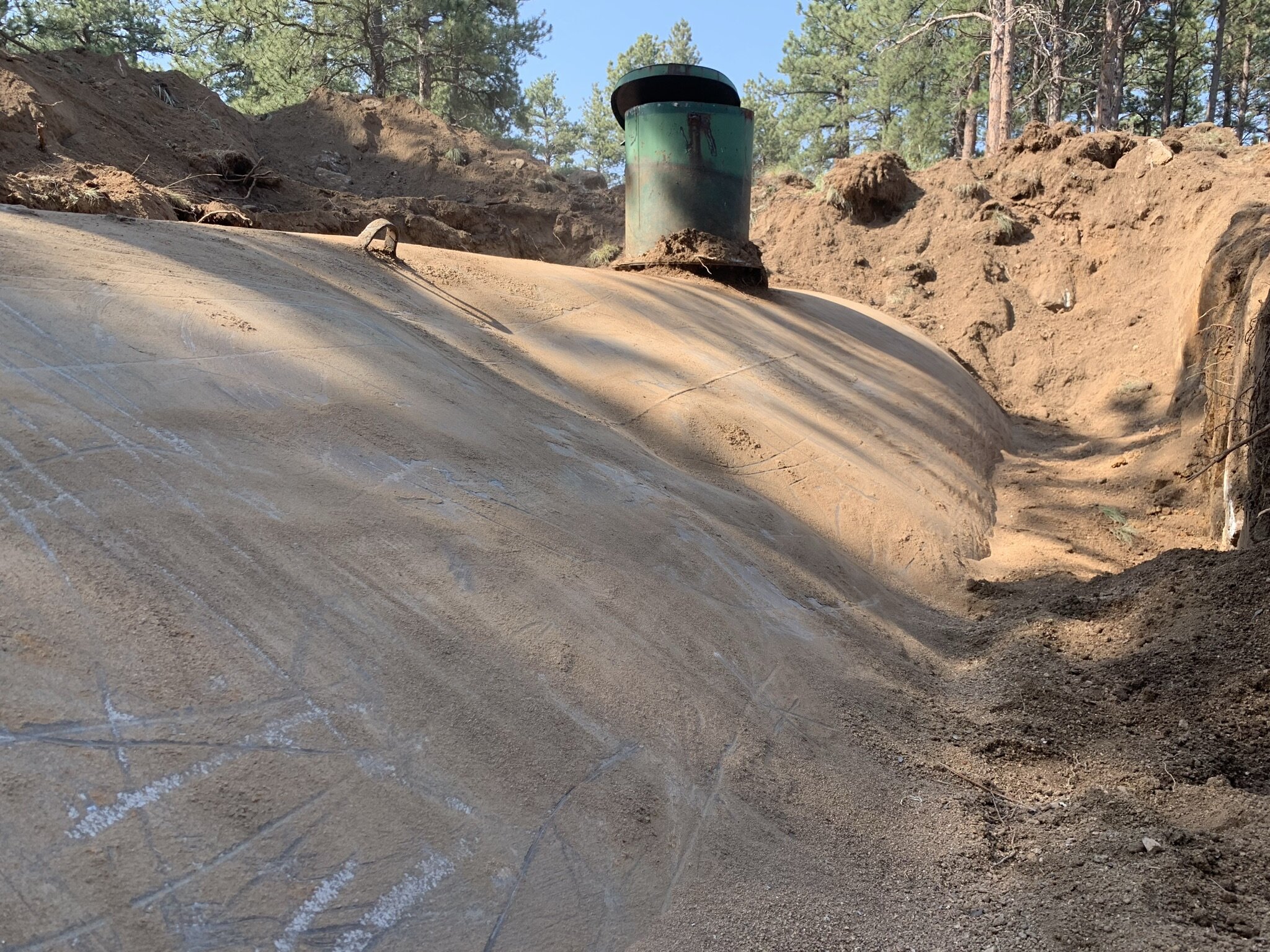
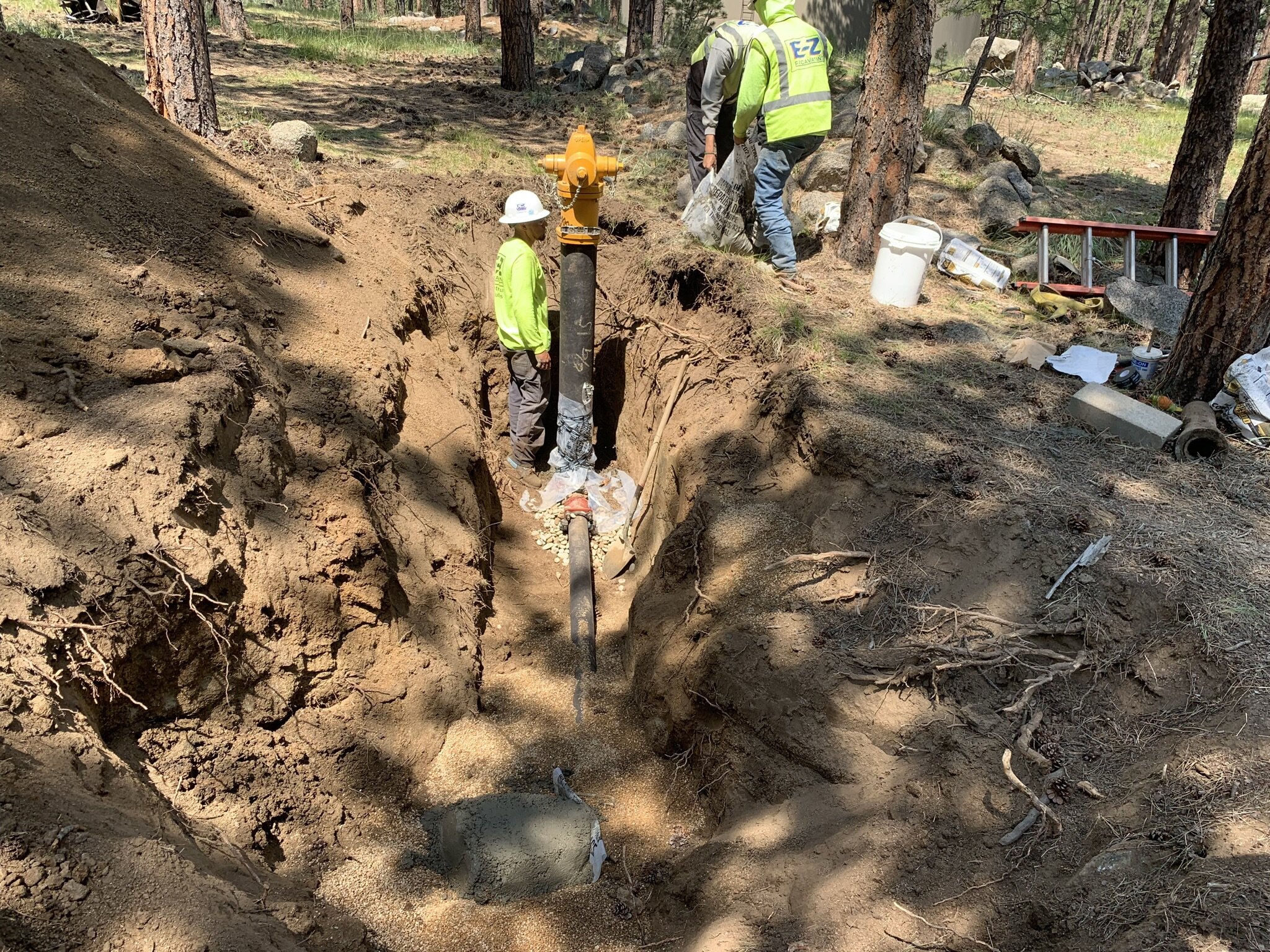
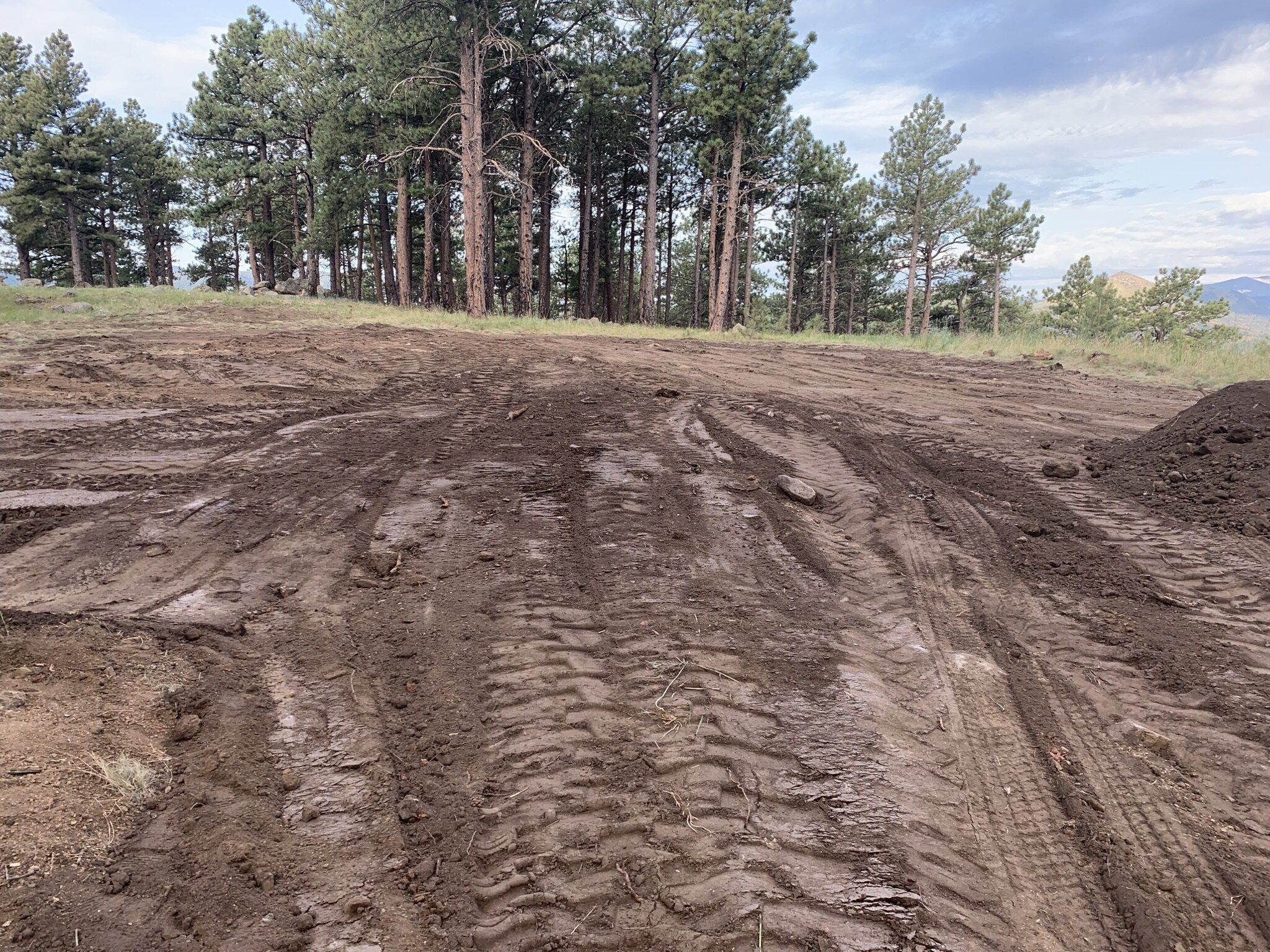
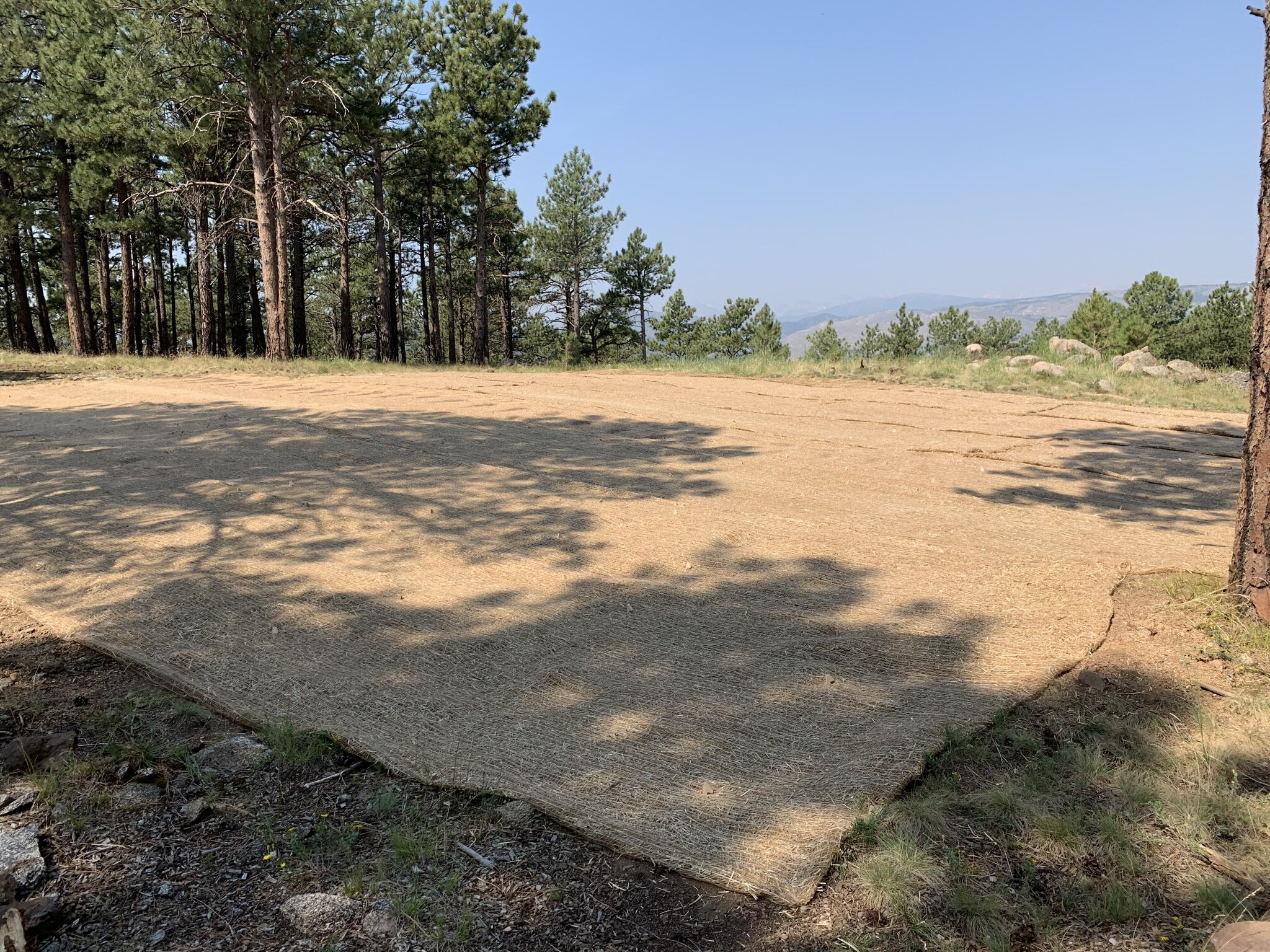
Those driving by the Pine Brook Reservoir this July (2021) may have wondered why the level dropped from full to down several feet seemingly overnight. One requirement from the State is that the emergency valve on the Pine Brook Reservoir dam be exercised/tested annually. This emergency valve is located at the very bottom of the reservoir and must be capable of dropping the water level five feet every 24 hours in the event of an emergency. Typically, we shoot for a flush of one foot every 24 hours - this year we opted to do a bigger flush of four feet over 24 hours.
Pine Brook Water uses the annual valve test to flush accumulated silt and sediment from the reservoir which helps improve water quality. We generally like to time our flush for the Spring when Four Mile Creek (our source water) is flowing well and we can readily refill. This year, with the creeks already running full in the Spring, we didn’t want to add additional water which could potentially have caused property damage in the City of Boulder. Because it was such a wet spring, Four Mile Creek is still flowing great and we are currently refilling at a steady rate.
This year, along with our flush, we had our annual state dam inspection. The inspector arrived on the day we were shutting down the flush and finishing up some preventative maintenance on the valve actuator. As usual, the dam was found to be in “Good” condition (the highest rating) all around and the inspector commented in his email, “Your dam is one of the best maintained that I've seen.”
Water main breaks are a common occurrence in Pine Brook and we get many questions about the condition of our pipes. So, why are we cursed with so many breaks? The majority of the approximately 16 miles of water mains were installed in 1964. To say they weren’t installed to the modern standards would be putting it kindly.
Best practice for water main installation is to dig a trench, lay down sand or gravel, place the pipe, place more sand or gravel around the pipe, and then backfill the trench with dirt. The installers of the majority of our mains dug as deep as the rock allowed, laid the pipe on the bedrock, and then pushed whatever they had dug out right back on top of the pipe. As the ground moves, mostly with temperature changes in spring and fall, this contact with the rock creates pinch points and the pipe cracks circumferentially in what is known as a “beam break.”
The process for fixing a break is fairly straight forward but can be time consuming:
We need to find out about the break. Often this relies on phone calls from passersby who see water coming up through cracks in the road. With our new tank monitoring system (Spring 2021) we will get alarms if tank levels are dropping faster than normal.
We need to locate the leak and the main. We use audio correlators placed at fire hydrants, valves, or meters which can give us a fairly accurate measurement of where the leak is located. We use an induced current in the main to locate its position in the street. At this point the water to the area is shut off at valves in the street.
We excavate. We cut the asphalt and dig down to the main. It’s supposed to be 5 feet down but we’ve found it as deep as 12 feet due to changes of grade made over the years. If the locates are accurate, this can go pretty quickly. Often times deep mains and conductive soils make the locates a bit less than accurate and finding the main becomes a challenge. Once the main is located we need to find the actual break. Again, if the audio correlators were accurate this goes well, if the measurement is off, we can end up having to expand the trench to search for the leak. Unfortunately, we don’t know how long it will be until it’s fixed and we can’t give estimates for how long until the water will be back on.
The repair is made. Once the offending rock is jackhammered away, a stainless steel clamp with a neoprene liner is centered over the break and tightened down.
Water service is restored. We very slowly open the valves that were shut for the repair and find a place at a high point on the line to bleed air and flush discolored water. The discoloration is accumulated iron and manganese that gets stirred up due to changes in water velocity during the break event. It’s not visually appealing, but it’s not harmful.
Cleanup time. Any exposed main is properly bedded with gravel and then backfilled with dirt, keeping large rocks away from the main. Soil is compacted so the area doesn’t settle over time. In the winter the top may be capped with road base as we can’t pave during cold temperatures, but eventually all cuts will be patched with asphalt.
We work hard to keep water flowing in Pine Brook given the challenges we have inherited. As for the pipe itself, it’s in great shape. Often when we dig it up we can still read the original writing from the factory. If you see water where you shouldn’t please call us ASAP!
Pine Brook Water District (the District) has three water tanks that are no longer in use and are proposed to be deconstructed. Each tank is in a state of disrepair and presents a hazard to residents and a liability to the District.
The first tank is an aboveground steel tank located on the end of Ridge Road. This tank sits on an easement on City of Boulder Open Space. When the District operated wells in the area, water was pumped into this tank for chlorination and then pumped up into the system. As the wells are now all plugged, the tank has sat empty, the roof beams are falling, and a crack has developed in the roof. The access ladder has been cut off to discourage trespasses by curious visitors but it still presents a hazard. A deconstruction permit has been acquired from Boulder County to remove this tank.
The second tank is an aboveground concrete tank that was originally part of the Fountain Tree Water system. When the District acquired this service area, this tank was kept in order to provide a backup source of water for fire protection. With the addition of a redundant water line (bored through the mountain from Wild Wood to Fountain Tree), this backup source of water is unnecessary. The concrete on the tank is beginning to spall and deteriorate. A deconstruction permit has been acquired from Boulder County to remove this tank.
The final tank is a buried tank which is located at the end of Bristlecone near our current aboveground tank. This tank was part of the original system and was used until the early 1980s when it was replaced with the 600,000 gallon aboveground tank. The District has concerns about the integrity of this tank and that it may collapse suddenly and without warning. The District is in the Site Plan Review Waiver (SPRW) process with Boulder County to get a permit to fill this tank in place. The SPRW is required by the county as the amount of dirt proposed to be moved is 100 cubic yards. UPDATE 11/16/20: Boulder County has determined that a SPRW is not required as all of the fill material is being placed inside the buried tank. A building permit will still be required and that application is in process.
If you have any questions about any of these tank removal projects, please contact Pine Brook Water District.
In September of 2020, Pine Brook Water installed rockfall mitigation above the water tank located on top of Bow Mountain. This tank is tucked under a cut in the rock and over time (this tank was installed in 1964) erosion has caused several large rocks to become loose and give way. Though the tank itself isn’t in danger, falling rocks can damage the new paint leading to rust formation.
In a water emergency, Pine Brook Water may need to shut your water off at the meter pit. Recently we’ve seen an increase in meter pits that have been covered by landscaping, are overgrown with trees/bushes, or have had the hillside collapse down on top of them. These pits are hard to locate and open under good weather conditions, think how hard they’re going to be to find in the dark with snow on the ground! Please help us help you by keeping your meter lid cleared off and free of material. Pictured below are 2 meter pits covered by landscaping rock (somewhere) and an example of what a good pit lid looks like.
In July of 2020, Pine Brook Water District personnel replaced the siding on the pump house located along Alpine Way. The existing wood siding hadn’t been touched in over 30 years and it was replaced with a fiber cement siding which adds additional fire proofing in the event of a wildfire. The roof was also replaced this year with a metal roof which should make this building last for at least another 30 years.
Pine Brook Water uses a drive by radio system to read water meters throughout the district. The water meter sits in a pit underground and sends a signal to a small box on a metal post which transmits the signal to our computer. Connecting the meter to the box is a small wire. Every year as residents begin their annual fire mitigation work, a fair number of these wires get cut with weed eaters. This results in us having to open the meter pit to get a manual reading and then come back at a later time to replace the wire. Please take care around the meter pit and radio box not to cut the wires. Also, please take care during winter not to pile snow on these radio boxes as it can affect their signal strength. If you think you may have cut the wires on accident, please contact us and let us know so we can get it fixed before our next meter read.
Pine Brook Water District discontinued all use of wells after the 2013 flood. All of the wells that had been kept as emergency backups were abandoned and filled in. In May of 2020 the shed that formerly housed well equipment located along South Cedar Brook was removed.
At their annual awards banquet in February, our very own Bob de Haas received the 2019 Manager of the Year award from the Colorado Rural Water Association. Obviously this is a big honor and was well deserved!
In early 2020 a leak was discovered on the water service line serving the J. Kirk Hendricks Community Center. Upwards of 30,000 gallons (approximately 0.7 gallons per minute) of water was going unaccounted for each month without surfacing. Pine Brook Water staff used leak detection equipment and determined the most probable point of the leak was in an area surrounded by gas lines, a power pole, and other utilities. The decision was made to abandon the existing ~500 foot service line and replace it with a new line. The route for the new line is directly from the filter plant, across the top of the reservoir spillway, and into the back of the Community Center - a distance of ~130 feet. The new line was placed in 2” conduit and a second conduit was installed to carry communication wires from the filter plant to our offices. Everything was backfilled and re-seeded just in time for the spring growing season!
In April of 2020 the SolarBee mixer underwent a total rehabilitation. Technicians from the manufacturer removed the mixer from the reservoir and replaced the battery, control unit, and impeller. This mixer was installed in 2008 and keeps the water in the reservoir mixed to reduce algae growth.
Wild Horse Tank Painting
In 2019 the 15,000 gallon tank located on the top of Wild Horse Circle was painted inside and out. Work included pressure washing the exterior, sandblasting the interior, adding a larger roof vent, shoring up the foundation, and painting both the interior and exterior.
BOW MOUNTAIN TANK PAINTING
In 2019 the 100,000 gallon tank on the top of Bow Mountain was painted inside and out. Work included pressure washing the exterior, sandblasting the interior, replacing roof beams, extending the overflow pipe, adding a larger vent, adding a ladder guard, removing trees, shoring up the foundation, and painting both the interior and exterior. Major portions of this project were paid for with FEMA flood recovery money.
Reservoir spillway Grate
In the summer of 2019, Pine Brook Water replaced its log booms with a galvanized steel spillway grate. This improvement will greatly increase the safety of the dam and prevent debris from falling down the 60 foot spillway tower. Major portions of this project were paid for with FEMA flood recovery money.
South Cedar Brook Main Repair
On February 14th, 2019, Pine Brook Water was attempting a repair of a leak in the 300 block of South Cedar Brook. A slow leak of approximately 10 gallons per minute had been located after flowing for over 30 days without surfacing. The break was found and a repair clamp was placed. When the main was recharged, it was quickly obvious there were additional problems as the excavation quickly filled with water. The decision was made to replace a 30 foot section of main as there were 3 other repairs within this section. When the old section of main was cut out, a hole was found just below the newest repair which showed evidence of improper handling at installation in the mid-60’s. Crews worked until well past midnight and everyone affected had water when they woke up the next morning.
Meadowlook Tank Painting
In 2018 the 50,000 gallon tank on Meadowlook was painted inside and out. Work included pressure washing the exterior, sandblasting the interior, patching holes, moving the overflow pipe, adding a larger vent, and painting both the interior and exterior. Major portions of this project were paid for with FEMA flood recovery money.
2013 Flood
The September 2013 Boulder Flood impacted the District in a multitude of ways. One example that was readily apparent was the washout of the road at North Cedar Brook and Linden Drive which left approximately 30 feet of water main hanging in the air. With limited resources available throughout the county, Pine Brook Water mobilized EZ Excavating to reinstall a culvert and rebuild the road. What was estimated to take months to repair was fixed and reopened in a matter of days. The District worked with FEMA and Boulder County to cover the costs of this project. The following link includes an article and time-lapse video of the reconstruction process.
https://www.kunc.org/post/watch-flood-ravaged-colorado-road-get-rebuilt-3-minutes#stream/0

